The Little Red Barn sanctuary
Myrna Driedger
How surprising to find this amazing Animal Sanctuary right in our back yard in Charleswood. I was delighted to be able to visit this sanctuary recently and was surprised to learn just how many farm animals are rescued when they are no longer considered profitable or worth having. Thanks to Jessica Walker, a young student, this little red barn micro sanctuary was founded on the beliefs and values that farm animals are “ someone”, not “something”. It is home to a variety of rescued animals who were otherwise destined for slaughter. Their primary focus is teaching compassion and empathy through knowl-
edge and personal interactions.
Founded in 2019, then opened to the public in 2020, The Little Red Barn is home to dozens (hundreds at times) of farm animals and they
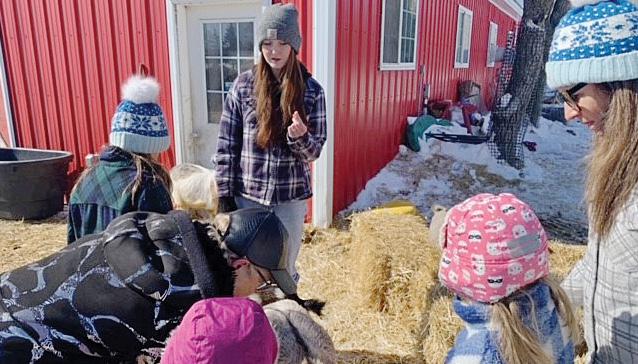
have rescued over 10,000 animals in just a few years.
While visiting the sanctuary, it is notable that horses, cows, pigs, and 4 ‘Little Red Barn’ u


Human rights activist honoured for lifetime of achievements


Myron Love
The legal partnership of Yude Henteleff, Harold Buchwald and Israel Asper has arguably contributed more to the betterment of society than any other trio of lawyers in our city’s history. I knew all three, although I had many more interactions with Harold and Yude than I had with Izzy.

I can’t remember how long I have known Yude, the only one of
204-947-1807
In appreciation of mothers

the trio who is still with us, but we undoubtedly go back 30 or 40 years. It was a pleasure to get together with him recently and find him still in good form as he nears
his 95th birthday.
Yude has been much honoured for his contributions to not just our own community but also to people around the world. His range of interests and impacts have encompassed education, heritage, healthcare, human rights and arts and entertainment. Among his more notable honours have been Human Rights Commitment Award of Manitoba in 2008, an honorary Doctor of Law from the University of Manitoba

 Tim Chapman
Tim Chapman
As a newer parent with 2-year-old twins, I’m often thinking about the remarkable work and dedication of mothers. Living so far from my childhood home in Virginia, I don’t have as many opportunities to thank and hug the mothers in my immediate family. Fortunately, the kick-off to the International Peace Garden season provides a great chance for many in Manitoba and North Dakota to honou r incredible women with the start of spring.
A scrumptious lunch and a free plant for every mom awaits as the grounds come back to life on Mother’s Day. One day, one meal, one gift –obviously, not enough to express the gratitude many of us feel. It’s just one way and a special tradition at the Peace Garden. If you can’t make it, don’t forget to share your gratitude in the best way that suits your family.
Mother’s Day is a unique experience for everyone. Our lives have been impacted by our own mothers and mother figures. My mind first goes to my own mom.
My mother, Janet Chapman, gave birth to me and my 13 siblings. Her journey becomes more
May 2023 whatsupwinnipeg.ca
The darker side of air travel 11 Spring is here - time for the barbeque! 8 Sri Lankan New Year ceremony 13
FAST DENTURES
6 ‘Yude Henteleff’ u
Yude Henteleff.
12 ‘Manitoba sports’ u
Join us for Mother’s Day Brunch at the International Peace Garden.
A visit to the Little Red Barn sanctuary.
For full test results on the air purification systems: https://www.rgf.com/test-results/




HALO-LED™

The all new HALO-LED™ is the industry’s first LED in-duct, whole home air purification system that is both mercury free and zero ozone compliant. The HALO-LED™ proactively treats every cubic inch of air conditioned space, thereby reducing airborne and surface contaminants and pollutants. By combining REME-LED™ UV technology along with RGF’s proven PH-CELL® and REME® technologies, the HALO-LED™ provides revolutionary indoor air purification.

The PiP-MAX™ portable air purification system utilizes RGF’s patented REME-HALO® technology reducing air pollutants such as bacteria, microbials, viruses, mold, smoke and VOCs. Leveraging ionization the PiP-MAX™ provides the added benefit of reducing airborne allergens, dust and particulates. Plugging directly into the existing wall outlet, the PiP-MAX™ can be installed in any room and offers an additional power outlet on the unit housing. Quickly and reliably resolve all your air quality issues with the portable PiP-MAX™ active air purification system.

2 whatsupwinnipeg.ca May 2023 1-800-265-0027 • info@bgpgroup.ca • https://www.bgpgroup.ca
PiP-MAX™
Breath easier today! Find out more by calling 1-800-265-0027
Check out this video of RGF’s HALO-LED™ whole-home air purification system: https://www.youtube.com/watch?v=_FCFF9Uj3Zk
Create a safer environment by purifying the indoor air of your home or workplace of unwanted airborne pollutants like viruses, bacteria, mold, dust, odours and pollen. With BGP Environmental Group’s air purification systems you can, and you won’t believe the difference. Don’t you think it’s time to clear the air? BGP Environmental Group introduces the latest in air purification technology with proven test results!
Breathe Easier Today!
Follow us online at: whatsupwinnipeg.ca
Facebook: Lifestyles55
Twitter: @Lifestyles55
PUBLISHER
Pegasus Publications Inc.
EDITOR
Dorothy Dobbie dorothy@pegasuspublications.net
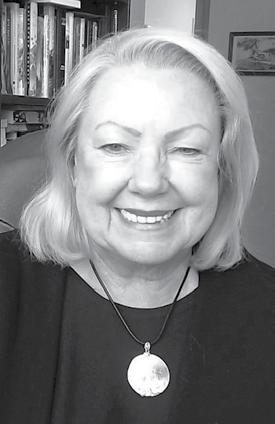
ART DIRECTOR Karl Thomsen karl@pegasuspublications.net
GENERAL MANAGER
Ian Leatt ian.leatt@pegasuspublications.net
CONTRIBUTORS
Gary Browning, Romel Dhalla, Dorothy Dobbie, Rick Duerksen, Hon. Myrna Driedger, Stefano Grande, Hon. Scott Johnson, Jim Ingebrigtsen, Hon. Kevin Klein, Crystal Kolt, Ian Leatt, Myron Love, Jo Magnifico, Marty Morantz, Fred Morris, Brent Poole, Senaka Samarasinghe, Trudy Schroeder, Wayne Weedon, Sherrie Versluis, Nathan Zassman.
Canadian Publications mail product Sales agreement #40027604
ADVERTISING
1-888-680-2008 info@pegasuspublications.net
SUBSCRIPTIONS
If you would like to receive Lifestyles 55, we offer both monthly newspaper and online formats.



To place your order, call 204-940-2700. Subscriptions are $48.00 per year, plus tax. American Express, MasterCard, Visa and cheque accepted. To view a back issue online visit lifestyles55.net
Published monthly by:
Pegasus Publications Inc.
138 Swan Lake Bay, Winnipeg, MB R3T 4T8 204-940-2700 whatsupwinnipeg.ca
DISTRIBUTION
Available at over 100 locations from Winnipeg, Brandon, Steinbach, Morden, Selkirk, Flin Flon and The Pas. If you would like bulk copies of this publication, contact Ian Leatt at (204) 940-2707 or ian.leatt@pegasuspublications. net. Also available digitally at whatsupwinnpeg/ lifestyles and on Facebook: Lifestyles55
EDITORIAL SUBMISSIONS
Call Dorothy Dobbie at (204) 940-2716 or email dorothy@pegasuspublications.net for more information and guidelines.

Any opinions expressed in columns by our contributors are their own opinions entirely and are not necessarily shared by Pegasus Publications Inc. All information presented by the contributors is the responsibility of the writers.
Lifestyles 55 is published monthly. Reproduction in part or in whole is prohibited without seeking permission in writing from the publisher.

Copyright Pegasus Publications Inc.
Possibilities
The last thought in President Biden’s speech when he came to Canada in March was the fact that we and the United States are the Lands of Possibility. That, I think, is the best word to describe Manitoba so I am dedicating this page to that thought and to all the Possibilities that we can realize here in our city and province under an open-minded government.
I did not pick these possibilities out of a hat. They are all things that have been in the works for many years. Four of these big moves involve transportation as is appropriate for our province that is in the centre of North America and should be a continental hub for the movement of goods and people. I have written about them all at one time or another and there are people out there working to make them come true. All it takes is political will and determination to resist the naysayers, overcome the technical barricades created often by governments themselves, and to proceed with the optimism that built our great province.
1. NeeStaNan Railway and a second Port on Hudson Bay. Back in 1913, work began on a railway and port facility at the mouth of the Nelson River. In 1920, the line was rerouted to Churchill because it was an easier build despite the problems with discontinuous permafrost and early freeze-up of the fresh water at this location. Port Nelson was abandoned. Now, more than 100 years later, the advantages of Port Nelson are being understood in the modern world. First, the rail line extends along a stable, hard-bed esker ridge that can bear heavy loads at speed all year long. Secondly, the bay here is salt water so does not freeze solid and would therefore be accessible year-round for modern icebreakers. Third, the shallowness of the bay can be mitigated with modern equipment that could suck up the silt as a slurry and deliver it to shore. And finally, modern methods of offshore freighter loading are used in the Eurasian Arctic that could be employed here. This port would be useable 12 months a year, would reduce shipping times through the St. Lawrence to Europe at least one day (with no wait times and backlogs). It would increase traffic on the One North Churchill line from the Pas to Amery, where it would split off to Port Nelson, avoiding the wobbly, swampy bed from there to Churchill. This line would be owned by the First Nations of the area. It would change the face of Canada, serving the Prairie provinces and perhaps even the Ontario Ring of Fire. In April the three provincial transportation ministers signed an MOU endorsing this concept. Stay tuned.
2. A modern Port of Entry at Emerson. The Emerson Border Crossing, open 24 hours, is one of the busiest in Canada and the busiest on the prairies for commercial traffic. Things move pretty smoothy for entry into Canada, but south bound traffic can be problem. Any artificial delay and trucks could be lined up for miles to clear Customs. The border crossing should be modernized on the Canadian side with automated entry for commercial vehicles. A duty-free hub with the same advantages afforded to the Winnipeg International Airport and Centre Port is part of the plan. An entry fee for commercial vehicles entering Canada (truckers pay a fee to enter the US) could be levied to support the upgrade costs. This plan has been on the books for two decades and is supported by the municipality of Emerson, the Emerson Duty-Free Shop and most recently, the local First nations. Serious upgrades to Highway 75 have already been committed by Transportation Minister Doyle Piwniuk, who is looking at the Emerson proposal.
3. Airship for transport to the North and far North. Dr. Barry Prentice of the University of Manitoba has been work-
ing on this proposal for three decades. It focusses on the efficacy of using lighter than air ships to transport goods and people to remote communities at a much lower cost and less environmental impact than current technology. But we are losing our edge. France has invested $30 million in a local French company, Flying Whales, that has since raised 300 million Euros to towards bringing these ships into production. And Quebec has acquired almost 25% of the shares, the rest being owned by an industrial consortium of some 40 French and Canadian aeronautical companies. Manitoba appears to be on the sidelines but there is still time to get into the act, and support our local genius behind the plan so we can service the far north.
4. Removing the railway lines from the centre of Winnipeg. Our city remains one of the last Canadian railway cities to still host those noisy beasts running through the heart of town. A derailment of 12 cars on the McPhillips overpass the second week in April 2023, has rekindled the discussion about what it would take to move the lines outside the city. Currently, more than 7,300 kilometers of rail lines criss-cross the city, accommodating some 50 trains a day. They run through Winnipeg at all hours and hold up traffic at 230 grade crossings. On hot summer days, sparks from their wheels set off fires on the right of way and potential derailment is a constant threat. It would cost several billion dollars to move the lines but that would also free up thousands of acres of inner city and prime land for redevelopment, increasing the tax base and improving the overall beauty and livability of Winnipeg. Cities that have done this over the past few decades have all realized a net benefit. It is well past time to get serious and start the ball rolling toward removal of the Ines.
5. Modular housing for the homeless. We cannot continue to tolerate the state of homelessness that exists in the city of Winnipeg and is spreading to rural towns. In November 2022, a group of 22 tiny houses were unveiled at a site just off Main Street. The problem is the cost. At an astronomical $5.8 million and counting, this is not the doorway to the end of homelessness as promised. At $240,000-plus per home, it is just too expensive. And these are very tiny – between 100 and, for the handicapped, 400 square feet. There are alternatives in both size and cost, however. One such is a company out of Taiwan, owned by former MP Cheung Sen Leung. “Our tiny houses are about 500 square feet with two bedrooms, one three-piece bathroom and a common room that serves as kitchen, dining room and living room. The budgetary cost is about $40,000.” Additional permits, a concrete pad or concrete post footing, electrical and plumbing and whatever else it takes to bring the houses up to local code will add to the final price. As a bonus, this company will train two or three people to do the assembly at their factory in China. All the buyer has to do is pay the return fare. Assuming those extras would add another $10,000 to the cost, bringing the total to $50,000, the city could have built 120 houses for the $6 million that the 22 tiny, tiny house cost. Tom Jackson is another seller of modular homes. The city complains that it needs land to put these on – I suggest that there are plenty of empty lots in the inner city and that a private public partnership could get the job done expeditiously. This is just the tip of the possibility iceberg. We know that we have tremendous opportunity to develop mineral deposits in the North, to attract more food processing in the south and to invest in our intelligent and forward-thinking Tech community. We are not using our Hydro electricity sector as intelligently as we could. There is so much more . . . Let’s open the door to possibility and see just how far we can go!
May 2023 whatsupwinnipeg.ca 3
Advertise in To book your ad contact Ian at (204) 940 2707 or ian.leatt@pegasuspublications.net and get noticed! ISSUES IN THE NEWS
Dorothy Dobbie
The Little Red Barn sanctuary
goats are just as interested in approaching humans as what we consider to be usual “pets”. The horse was jealous of the attention we were giving to the cow and tried to nudge his way in and nudge the cow out. The horses responded to us, even allowing some of the little girls with us the opportunity to “braid” their hair. Lucy and George, the resident pigs seemed to enjoy being brushed also. While there, we were told about Scotty, a 25-year-old Belgium draft gelding, who was rescued. Since arriving at the Little Red Barn, he was learning to enjoy human companionship, being spoiled, and fussed over with brushings and hugs. He was a workhouse prior to coming here and was worked to the bone his whole life. He recently became quite ill with a bowel impaction and was being treated by a local vet. Everyone was hoping that he would get better, but we just heard that he didn’t make it and passed away on the weekend. One of the other horses, Tucker, was his special friend and never left his side. Horses are such sensitive family members.
By opening their barn to children, they like them to recognize that the residents are different colours, sizes, genders, ages, and species that form lifetime family bonds with each other. All farm animals have the same relationships. The Little Red Barn sanctuary operates independently with donations and volunteer support. Through empathy and compassion, they bridge the disconnect between individuals and farm animals for a kinder world. In the past year alone, they have connected farm animals with over 1500 children and their families personally.
What began with saving two piglets, George and Lucy, and a visit to a local school to educate them about factory hog farming, has led to dozens of farm animals being saved from slaughter and thousands of people being educated through tours, social media, rescues, published research, interviews, media articles and schools. While their primary focus is educating the public about farm animals and their lives in factory farms, they also participate in frontline animal rescue, sanctuary partnerships, animal welfare com-
mittees and promotion of sustainable, healthy lifestyles with the hope of creating a better world for animals, people, and the environment.
Molly is a rescued cow living a wonderful life among friends at the Little Red Barn Sanctuary. She gets a chance to use her maternal instincts with the first calf she gets to keep. They rescued Molly after serving in the dairy industry for years, providing a forever home where she gave birth to Rooney, the first baby she will keep. Molly is a phenomenal mother, even nursing an orphan calf along with Rooney.
If you are interested in helping Jessica and her family in their quest to save the lives of hundreds of farm animals, giving them a proper home in their next chapter of their lives, I encourage you to donate to their cause or volunteer. While we were there, we saw a group of volunteers cleaning out the barns and doing many other tasks that need to be done. The list is endless.
By teaching empathy and compassion through knowledge and personal/ virtual interaction, they are promoting a generation of children who can make the connection that farm animals are sentient beings, capable of love, friendship, grief, intelligence pain, fear, joy, sadness and humor. What began as a Grade 8 science project for Jessica led to the creation of this wonderful sanc-
More help for seniors in Manitoba
Dear Friends,
Since coming into office, our PC government have continued to support the people of Manitoba with a specific focus on seniors to further commit to them and their caregivers.
Hon. Scott Johnson Minister’s Message
Premier Heather Stefanson created the Department of Seniors and Long-Term Care, of which I was honoured to be the first Minister. She designated a special mandate for this portfolio, that being the implementation of all 17 recommendations of the Stevenson Review, as well as bringing forth the seniors strategy.
On Feb. 22, I was pleased to announce and release “Manitoba, A Great Place to Age: Provincial Seniors Strategy.” The Manitoba government is committed to moving the senior strategy forward to ensure that older adults may remain in their homes as they wish.
In the strategy, we committed to support-
ing communities to become more accessible, safe, and tailored to the needs of Manitobans as we age, and in less than two months since launching the strategy, we have already invested over $34 million in multiple key initiatives that will help us to realize this vision.
Most recently, I was at the Brooklands Active Living Centre in Winnipeg, to announce $3 million in funding for two housing programs that will allow more Manitoba seniors to safely age in their homes and communities as long as they choose.
$1.5 million will go towards a new home modification grant program to provide financial assistance to seniors over the age of 65 and/or family members who have seniors over the age of 65 living with them with a household income under $60,000. The provincewide grant will operate annually and allow for home modifications that enhance safety during daily living activities.
A further $1.5-million investment will sta-

tuary. With the help of her family, she is showing us that a little light can affect the world around us. Sometimes the injustices we see in the world can be overwhelming. But the importance of youth activism is instrumental in creating hope for a better world for animals, people, and the environment.
For further information, or to donate or volunteer, please visit their website at “thelittleredbarn.org”
It was such a pleasure to meet Jessica and her human family as well as her animal family. I would like to send out a huge thank you to them for what they do.

bilize and strengthen the Manitoba government’s supportive housing program, which has over 750 units including 528 in Winnipeg and 236 in rural areas. This investment will increase the per diem rate by 19 per cent to ensure residents receive high-quality services. The housing-with-care model provides residents in community-based congregate settings with access to comprehensive support services including meals, laundry, light housekeeping and personal support services.
The senior strategy is a living document with a vision that older Manitobans are valued and empowered to live healthy and productive lives in our communities. It is the actions that our PC Government will create real tangible change, and we are proud to be taking action on behalf of seniors as we continue to make Manitoba a great place to grow old.
The Hon. Scott Johnston is the Minister of Seniors and Long Term Care.
Concern grows over the size of the deficit and continued spending
Skyrocketing inflation and the cost-of-living crisis is impacting families from across Canada. Food is getting more expensive. Gas and home heating are costing more. Canadians with mortgages have seen a sharp increase in their payments, while those looking to buy a house for the first time see the dream of homeownership slip out of reach.
Canadians have been forced to contend with eight consecutive outsized interestrate hikes.
Yet, after eight years, the Prime Minister has chosen to continue with his high tax and spending agenda. These policies have helped to create a cost-of-living crisis that is hurting the hard-working people of this country.
This government’s decision to continue increasing taxes means workers
are punished for working and take home even less of their paycheques.
Just this year, payroll taxes on workers and small businesses were raised.
Workers making above $66,600 will be forced to pay an extra $305.00 out of their pockets when they need it most.
Justin Trudeau’s grocery rebate just gives money back to Canadians that he already clawed away from them with his tax increases. It won’t solve the costof-living crisis driving many struggling Canadians already over the edge.
To add insult to injury, Liberals are still raising taxes on restaurants and breweries, already struggling to survive by increasing the excise tax on beer, wine and spirits by 2%.
The federal carbon tax increased to 14 cents per litre of gas on April 1, 2023.
So where is all this money going?
Canada’s federal debt for the 202324 fiscal year is projected to reach $1.22 trillion. That is nearly $81,000 per household in Canada.
The cost of servicing Canada’s enormous debt continues to grow. The cost to service Canada’s debt this year (2023-2024) is projected to be $43.9 billion. This is nearly double the costs in 2021-2022, when debt servicing costs were $24.5 billion.
What accounts for this? Not slowerthan-expected economic growth. The government’s revenues are off only slightly from the levels projected in the fall and remain considerably higher than were projected last year at this time: more than $25 billion a year higher, on average, over the forecast period. So, the problem is … spending.
Whether it is $1.2 billion to the Ca-
nadian Space Agency to develop a “lunar utility vehicle”, or the $54 million to help the government recover fraudulent overpayments, that shouldn’t have been made in the first place, or COVID-19 emergency benefits, the Minister of Finance has continued her wasteful spending streak.
Canadians are living in desperation, skipping meals, visiting food banks in record numbers, living in their parent's basements, unable to drive to work, falling into depression, and even considering suicide because they cannot afford the pressure and the bills that this Prime Minister has imposed after eight long years. This budget makes all of those pressures, all of those pains, and all those costs even worse.
My conservative colleagues and I will continue to fight to bring back the common sense of common people to Ottawa.
Marty Morantz is MP for Charleswood-St. James-Assiniboia-Headingley.


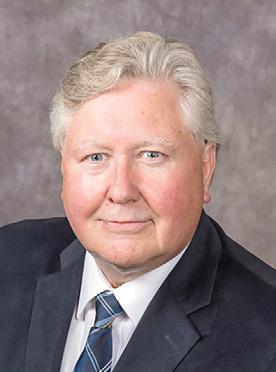
4 whatsupwinnipeg.ca May 2023 u
Continued from page 1
Hon. Myrna Driedger is MLA for Roblin and Speaker of the Legislative Assembly.
Hon. Myrna Driedger Broadway Journal
M.P. Marty Morantz
Marjorie Street: Look for the Octopus mural!
To celebrate the 100th Anniversary of St. James (starting just west of St. James Street to Sturgeon Road) breaking away from Assiniboia to form their own municipality, I am doing street profiles. This column features Marjorie Street.
Since 2019, Marjorie Street has been defined by the Octopus Mural, created by Jen Mosienko and Julia Beveridge, on the side of Underworld Scuba.
Let us look at a little bit of Marjorie Street History.
Marjorie Street South
Between 1934 and 1945, 102 Marjorie was owned by Harold and Catharine Isabella Harris. Catharine (nee Bourke) had earlier sold land a little farther east that enabled Assiniboine School to be built. In 1945, 102 Marjorie was sold to the Winnipeg Bible Institute. The Bible Institute soon decided that Marjorie Street was not for them. By late 1947, the Bible Institute was again on the move to 2 Evergreen Place.
1948 was the last year that 102 Marjorie was listed in the Henderson Directory. In 1949, new homes appeared in the Henderson Directory. However, Marjorie Street south, which lined up perfectly with Marjorie Street north of Portage, was now called Riveroaks. The first Riveroaks residents listed in the Henderson’s were Reginald and Gertrude Williams and William and Mae Montgomery. Jack Roberts, a long-time Riveroaks resident, was a manager for the Great West life Underwriting Service and a Councillor for Dunnottar. The Tyrone Apartment Block at 1806 Portage first appears in the 1951 Henderson Directory. In 1954, the River Oaks apartment Block at 1812 Portage is listed for the first time in the Henderson Directory. During the early 1960s, Ron and Joyce Littlejohn, St. James teachers, lived in the block.
After our 1975 marriage, 1812 Portage was the first home Ruby and Fred Morris.
Portage and Marjorie
In 1923, the Parkview Theatre at 1823 Portage opened with nearly 700 seats and
Priorities
Harlow Giles Unger, the wellrespected educator, scholar, and author of over two-dozen books on history and education is telling us, it is not global warming we should be concerned about; it is our ignorance, along with our irresponsible and cavalier attitudes, which are pushing our civilization back into the Dark Ages when the “Hoi Polloi” were kept ignorant, immature, and stupid, as The Church, through their tyrannical nobility and the Spanish Inquisition, controlled the population by keeping them uneducated and in constant fear through the perpetual slaughter of millions of innocent men, women, and children.
a pipe organ. Max Blankstein designed the theatre. Sadly, the theatre was destroyed by fire in 1924 and not replaced.
Many businesses are gone but not forgotten. They include Larry Morris Appel (who was familialy known as Morris Appel) and Joe Schwartz's Parkview Drugs, the Piper's family grocery store, Barber Bert Lenton, Douglas Gibb's Furniture store, James Sim of Sim Cleaners Tailors and Furriers, Rollie Gledhill's Ideal Sharpening, the Pizza Place, and Brothers Restaurant. Jock Oliphant was the proprietor of Hygrade Cabinets. Also, Jock was Canada's First Master Model Railroader.
The early 1930s archives reveal that St. James’ only Piggly Wiggly store was located at 1821 Portage. The store later became a Safeway. Underworld Scuba, St. James Bowling, Olympia Cycle and the Captain’s Table are current businesses that help the corner continue as a meeting place.
There has been a church presence near Marjorie and Portage for over a century. In the 1911 Henderson Directory, the Church of Christ and a Presbyterian Church were listed on Marjorie. On October 9, 1910, the Church of Christ was dedicated by Reverend A.N. Simpson. The current Church is the Liberty Full Gospel Church. After moving from Banning Street, the Liberty Full Gospel Church held its first Marjorie Street service on September 3, 2000.
During the 1930 Federal Election Campaign, William Kennedy, the Conservative Candidate for R. B. Bennett's Conservatives, held a rally on Marjorie Street. Mr. Kennedy, with strong support in East St. James, defeated the Liberal incumbent. On October 19, 1947, the St. James Kiwanis Club presented the municipality of St. James with the Kiwanis Park at 247 Marjorie Street.
North of St. Matthews
During the first half of the 20th Century, the dairy industry had a strong foothold in East St. James north of Barry Avenue (now known as St. Matthews). Fred and Jane Sparkes, Charles Edwards,
and Arthur Watson operated dairy farms. Also, the Winnipeg Sports Car Club once had their clubhouse north of St. Matthews. In 1965, the Sports Car Club held a Jack Frost Rally.
The People of Marjorie Street
Marjorie Street residents are listed for the first time in the 1911 Henderson Directory. These residents were Frederick G.H. Orchard, Walter Mitchell, Christian L. Moon, Arthur Hope, John Crolly, William Green, and Alice Climie. Steve Panchuk was another early resident of Marjorie Street. Despite losing both feet and his fingers on one hand, Steve continued working as a wood cutter. In April 1924, Steve died while cutting wood for a north end customer.
In 1913, Lewis Murphy and his twin brother, Luther, of Parkview Street, started the weekly St. James Leader newspaper. For the next 49 years, the Murphy family ran this newspaper. Between 1915 and 1937, the Leader's office was located at 1830 Portage.

In March 1962, newly elected St. James Mayor Bill Hanks (Lewis’ sonin-law) sold the newspaper to a St. Vital Weekly, the Lance. Harold Murphy, another member of the Marjorie Street Murphy family, had a long educational career in various parts of Manitoba. Harold taught at Linwood School and served as the principal of Britannia and Bannatyne Schools. Harold was also involved with various community activities including the St. James Chamber of Commerce, St. James United Church, Deer Lodge Curling Club, and the Manitoba Golf Association.
A couple of St. James Legion presidents resided on Marjorie. Joseph Gallaher, one of the founders of the St. James Legion, was president in 1919-20. Henry (Harry) Rustige served as president between 1928-31.
During the 1950s, Jimmy (1920-87) and Fay King raised their family on Marjorie Street. Jimmy was the musical director for CJAY, wrote a Winnipeg Free Press entertainment column, and played at countless socials. Norm Middleton, who grew up on Marjorie played in one of Jimmy King's musical groups.
There were many Marjorie Street residents with impressive longevity records.
Charles Irving was a St. James fire fight-
er for 28 years. Albert Jeffrey was with the Speers Parnell Bakery for 30 years. Charles Beasley worked 45 years with the City of St. James. Samuel Scott spent 37 years at Winnipeg Electric Railway.

The young people of Marjorie Street often appear in the newspaper archives.
In 1926, Doris Ord a Free Press Sunbeam, wrote Runaway in the Sunshine Club Section. In August 1940, during World War 2, a group of children held a circus on Marjorie Street to raise money for the Manitoba Red Cross. The children were Myrtle Davis, Phyliss Sutherland, Kenneth Sutherland, Don Jenkins, Audrey Dawes, and Verna Wright.
David King formed a band called Marjorie's Children. David became a Vancouver playwright. David wrote songs, including Stevenson Field, about the August 18, 1964, brief visit to St. James by the Beatles during an airport refueling stop.
Glen Beckett played on the 1967/68 MJHL Championship St. James Canadians. In 1972, Ingrid Roh was Miss Manitoba. During the 1965/66 St. James Collegiate school year, Ingrid and Berry Street's Carol Black (Miss Manitoba 1970) were classmates in the Grade 10 Class of Teresa (Terry) Baillie. Some memories of Marjorie Street can be found in articles written by a couple of people who grew up on Marjorie. A retro St. James Facebook Post by Charles Jonnason, dated March 7, 2019, is titled Drug Store Diner. On June 19, 2021, Randall King the Winnipeg Free Press Film critic wrote about Marjorie Street in a tribute to his recently deceased brother David.
Marjorie Ramsey was an original member of St. James United Church and the Business and Professional Women's Club of Winnipeg. Anne Rock supervised the Kiwanis Playground at King Edward and Ness for a decade. Anne was a Silver Cross Mother. On December 5, 1970, Emmie Rumley's picture was in the Winnipeg Free Press. The article stated that Emmie had 109 descendants.
In 1945, the St. James School Board decided not to build the new St. James Collegiate on Marjorie Street. Marjorie Street has had just about everything else.
Fred Morris is a Grandfather, Sports Fan and Political Activist.
place where the following incident occurred. Charlemagne, while chasing the Saxons (as HE said), or being chased by them (as THEY said), arrived at the bank of the river at dawn, in a fog. The enemy were either before him or behind him; but in any case, he wanted to get across, very badly.”
Thought
Unger points out, today’s youth are ignorant and immature; more than half of American high school graduates are functionally illiterate, with many having reading skills at less than a grade three level. Most Americans know very little about history and science. Proven scientific facts are being taught in school as theories, and students are being told that many popular fairy tales and myths are true histories.
“Frankfort is one of the sixteen cities which have the distinction of being the
The above is a satirical quote from Mark Twain’s book, “A Tramp Abroad”. Our schools present their version of history as if it were all factual when it is no more than one side of the story and is often not even close to the truth. As Northrup Frye described it, “The written word is far more powerful than simply a reminder: it re-creates the past in the present, and gives us, not the familiar remembered thing, but the glittering intensity of the summoned-up hallucination.”
Many of the books which Harlow Unger suggests students should read are difficult to find in libraries, are seldom mentioned in magazines nor newspapers, and are difficult to obtain. At one time, Thomas Paine’s writings were studied in all American schools. Today, most students have never heard of Thomas Paine, nor Gerald Massey, Robert G. Ingersoll,
John Locke, Robert Eisenman, Joseph Atwill, and Ralph Waldo Emerson, even though, many of these men, along with dozens of other freethinkers, have been instrumental in obtaining for us our freedom of thought and the few civil rights we have.
Our education system is not teaching students how to think and form their own opinions. Three-quarters of a century ago, educators like Northrop Frye were trying to change this. Frye tried to show that there is a big difference between true history and mythology. In his lecture, “The Educated Imagination”, Frye detailed how people usually do not think for themselves, they just go with the flow and follow convention. For decades, at the University of Toronto, Frye taught The Bible as literature. Frye was advised, he should avoid making comments that might lead the student toward or away from any position of what is called belief.
Despite this, Frye would tell his students, if there is any true history in the Bible, it is there by accident. And Frye presented facts to prove this statement.
The University of Alabama’s official mission is to advance the intellectual and social condition of the people of Alabama through quality programs of teaching, research, and service. In practice, academics plays second fiddle to fun and games. Unger gives this example, a professor’s salary is $45 thousand US per year, while Nick Saban, this university’s head football coach, has an annual salary of $12 million US. The uniformed band, which performs at every football game, is costing this university more than $1 million US each year. Where are the priorities?

Unger, for more than fifty years, has written about how the standards of education in the USA are well below the standards in some other countries, and continually falling. He states, the USA is in a decline which is accelerating so quickly there is no hope for it to turn around. It seems that Joseph Stalin’s prophecy that the USA will eventually rot, like a pear, from the inside out, seems to be coming to fruition. Which country will take over from the USA?
Next Month: Freedom
Wayne Douglas Weedon is a Manitoba author who writes a combination of fictional and factual stories and novels.
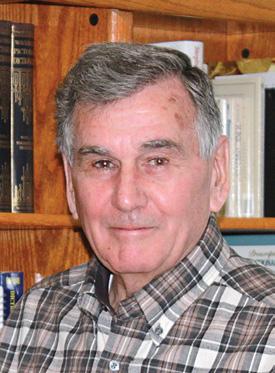
May 2023 whatsupwinnipeg.ca 5
Wayne Weedon Food for
Fred Morris From the desk of a gadfly
A day game football scrimmage for University of Alabama with coach Nick Saban (2010). Photo courtesy of the U.S. Library on Congress.
What doesn’t the NDP get about healthcare spending? Do they deliberately twist things, or are they just unable to understand?
Dorothy Dobbie
“Why doesn’t Wab Kinew grasp the facts about health care when they are presented to him?” asked a frustrated Heather Stefanson, fresh from Question Period when we began this month’s interview.
She was speaking of the Opposition Leader’s insistence that the current government has cut health care spending when, in fact, health care budgets have been consistently increased, year over year, since this government took office. The last NDP budget in 2014/2015 had health care pegged at $5,653,292. This last budget, including Mental Health and Seniors (so we are comparing apples to apples), is set at just over $7 billion.

Furthermore, the Opposition leader seems to have mixed up a ministerial working group with the Diagnostic and Surgical Recovery Task Force that is addressing the COVID-19 backlog and reporting their findings to government. He claimed there are no doctors on the task force, which is made up of a team of highly respected local healthcare professionals and doctors, when he might have meant the ministerial working group which, of course, has no doctors on it.
The Winnipeg Free Press seems to be just as confused –or they don’t do their homework – but CBC has it right. They report that the COVID-19 backlog has been eliminated for 10 of 30 procedures, backing up what the Premier said in that same Question Period when she noted that 32% of the total backlog had been reduced and that the diagnostic backlog was down by 31%. Some of the backlogs such as CT scans, cataract surgeries, urology tests, oral surgeries and ultrasound tests have been eliminated entirely. Backlogs for procedures such as cardiac surgery and adult allergy testing have been reduced more than 50%.
As Dr. Ed Buchal of Doctors Manitoba and the lead member of the Task Force, which is chaired by Dr. Peter MacDonald, said, there is a difference between the backlog and the wait times – and while he agreed that wait times must also be brought under control, those wait times existed long before this government took office. Nevertheless, that is their next target, and the Task Force
is determined to deal with this.
Perhaps what is irking the NDP is that the Premier is sensibly looking for ways to relieve Manitoban’s of their pain by purchasing the services of private sector diagnostics and surgeries in areas where there is no need for overnight stays, but where day surgeries such as oral surgeries or diagnostics such as CT cans and ultrasound tests, can be performed in an office without overnight care.
“Care requiring overnight stays have to be managed in hospital to comply with the Canada Health Act, but day surgeries do not,” she says.
This makes sense and indeed, contracting private services for some procedures was started under the NDP when the premier was critic for Health in Opposition under Gary Doer. At her urging, he ultimately allowed three private clinics. The Maples Clinic and Western Surgery Are still operating privately, so contracting private services is not an unknown concept under the NDP.
“It promotes efficiency,” says the Premier. “When private practices have to compete with each other, not only do they make sure they are counting every dollar for the sake of offering the most affordable product, but they compete to be the safest and best run operation they can.”
This frees up dollars for other health care priorities, relieves the burden on the public system and does not cost the patient a penny out or pocket because the services are paid for by the Health Department.
“To stay in business, the private sector has to be accountable for every dollar they spend,” she adds.
“Look, there is an inherent conflict of interest in a system where the provider and the purchaser are the same. In our public system they can’t even really estimate the cost of a simple hip surgery,” she says. “They can’t account for waste or lost time or any of the variables that can happen in a huge bureaucracy. But a private operation has to account for everything and the higher the production the more money they make so everything moves along faster.”
As many people have noted, there are no wait times for privately run veterinary services where you can get a scan or an operation immediately for your pet’s injury.
Of course, the NDP derives much of its funding through unions who jealously guard jobs for their members. This is understandable, but sometimes it is to the detriment
A 2017 report from the University of Ottawa, pointed out:
“Manitoba’s health care system is expensive and has poor outcomes relative to its peers, despite the provincial government having consistently spent more than would be suggested by the macroeconomic cost drivers.”

It continued, “As a result, Manitoba has one of the highest per capita costs of health care in Canada. According to the Canadian Institute for Health Information (CIHI). But, despite this spending, according to the Conference Board of Canada, Manitoba still receives one of the lowest grades for health status.”
They pointed out that, “From 2010 through 2014, average total health care expenditure growth in Manitoba was constrained to 3.5% annually. The savings were primarily the result of a contraction in investment in capital (-5.3%), as well as slow growth in spending on administration (0.5%) and drugs (1.1%). Meanwhile, spending on health professionals (6.4%) and other health spending (5.7%) advanced at a pace that exceeded the national average.” In effect, labour costs were increased at the expense of capital investment, exactly what one would expect from the Selinger government of the day.
of the public good. They have even been known to reject volunteer services for the same reason. There must be a balance and Premier Heather Stefanson is trying to find it.
“We are making headway in fixing health,” she says, “but it cannot be fixed overnight.”
That said, she is not expecting patients to wait in pain. Arrangements have been made with a wide number of providers out-of-province to help fill in the gaps, especially those that have occurred during the pandemic. All you need is your doctor’s referral to qualify.
Check here for further information: https://www.gov. mb.ca/health/dsrecovery/options.html
Manitoba Health pays all out-of-province fees to the surgeon and hospital directly and will reimburse any eligible expenses incurred by the patient.
So far, this plan has provided relief to 23,500 patients in our province, says the Premier. She feels the urgency of those who have not yet been helped and she is determined not to let political doctrine deter her from making that happen.
u Human rights activist honoured for lifetime of achievement
Continued from page 1
in 2006, the Manitoba Bar Association’s Distinguished Service Award in 2002, the Learning Disabilities Association of Canada’s Lifetime Achievement Award in 1999 and induction into the Order of Canada in 1997.
The much-accomplished retired Yude stems from humble beginnings. He grew up on the family farm in St. Norbert.
“My father and grandfather (Jewish immigrants from Russia) began farming in 1921 in St. Anne,” he says. “My grandmother though wanted to be closer to the relatives in Winnipeg. So we became market gardeners in St. Norbert.”
Yude recalls attending a one-room country school with a pump for water and an outhouse in the back.
He met his future law partners at university and the threesome quickly became fast and lifelong friends. In 1965, Yude and Harold formed the law firm Buchwald Henteleff. In 1970, they joined forces with Izzy to form Buchwald Asper Henteleff.
“The three of us were bound together by a love of the law and a commitment to social justice,” Yude recalls. “We also shared a commitment to the City of Winnipeg and the arts, and a passion for the Jewish people and for education. We felt strongly that, as lawyers, we were in an ideal position to serve as advocates in ways that would enrich our community.”
Due to one of his own children having a learning disability, Yude was instrumental in the formation of the Learning Disabilities Association of Manitoba. He became a leading voice nationally advocating for children afflicted with learning disabilities.
He was also a long-time member of the Manitoba Association of Rights and Liberties. His interest in human rights, he recounts, came about through a government appointment to the Canadian human Rights Commission. In addition to monthly trips to Ottawa, his human rights advocacy brought him to Thailand, Kyrgystan, Israel, South Africa and several countries in south and central

America – in particular a stay of several months in Honduras.
He also played an integral role in the creation of his friend Israel Asper’s visionary Canadian Museum for Human Rights. Yude chaired the Content Advisory Committee. He and the committee members traveled across Canada – from Labrador to Iqaluit to Victoria, listening to stories Canadians felt it was important to include in the new museum.
“It was a daunting challenge,” he recalls. “It was a unique opportunity to meet a wide cross section of Canadians. We were greeted by huge turnouts everywhere and some of what we learned about the state of human rights in Canada was shocking. Much of what we heard was taken into consideration in determining the areas the museum has chosen to focus on.”
The project that Yude has been primarily focusing on over the past few years has been the one that hits closest to home for him. That would be the transformation of the Henteleff Family farm into Henteleff Park and Interpretive Centre highlighting Winnipeg’s early market gardening industry as well as the Metis roots of the area.
“For years, the market gardeners in our area supplied all the fruits and vegetables
for the North End Farmers’ Market at Main near Selkirk,” he notes.
“The park (in south St. Vital) has been a huge success,” Yude says. “There had been some commercial interest in developing the property, but we were able to get the land rezoned as a public park. Today, we get visitors from all parts of Winnipeg as well as numerous school groups.
“It is a beautiful area.”
Still relatively hale and hearty, Yude and his partner, Joy, have recently returned from wintering on Vancouver island. “Traveling our country, I am constantly reminded what a wonderful country Canada is and how wonderful are our people,” he observes. “I was delighted to be able to go into a coffee shop in Duncan (on the island) and buy saskatoon berry muffins. I bought half a dozen muffins and a lot of saskatoon berries.”
Although COVID-19 restricted Yude’s social interactions for a while, an experience most people can no doubt share (and he is still careful, considering his age, about crowds), he remains thankful he is still in relatively good shape physically and mentally and still tries to go for daily walks.
“It is important to stay active and involved with people,” he says.
6 whatsupwinnipeg.ca May 2023
Heather Stefanson
The Premier’s priorities
Myron Love
Your legacy can #GiveBetterFutures for sick and injured kids
As I look towards the future, it’s the tiny feet of yesterday, today, and tomorrow that give me hope. Children in our community will become the leaders and champions we look up to, and trust to build a better world. And it’s so important we make sure they have the care they need to lead the healthiest lives possible through specialized care at HSC Children’s Hospital and cutting-edge research at the Children’s Hospital Research Institute of Manitoba (CHRIM).
May is Leave a Legacy month – a time to reflect and plan the legacies we will leave behind for kids as they grow. A planned gift to the Children’s Hospital Foundation of Manitoba will help #GiveBetterFutures for sick and injured kids, and their families, for years to come.
There are so many ways to keep children in mind as we plan, like a gift in a will, a gift of insurance, a trust, RRSPs, life insurance policies or other planned
gift. At the Foundation, we’re so grateful for those who hold families forever in their hearts by making a legacy gift.
When you share your intention to make a planned gift, you join a group of generous and caring community members in the Annie A. Bond Legacy Circle, named to honour the dedicated nurse who opened our children’s hospital in 1909.
We’re so thankful for Annie A. Bond Legacy Circle members, like Kathryn McBurney, whose daughter, Quinn, needed HSC Children’s not once, but twice. First for life-saving care after a critical collision, and then for gender-affirming care.

“I want every child to have a better future like mine now does,” says Kathryn.
Legacy giving is often a family decision, and that rings true for Allan and Kerry Bartlett. They have planned a legacy gift to support CHRIM’s future, to share their gratitude for research that saved their son
Bryan’s life.
When Bryan was two days old, and already recovering from a surgery to clear a bowel obstruction, he contracted spinal meningitis. Doctors treated Bryan with a newly developed drug, and it saved his life.
“Our financial situation got to the point where we had some money to give and so we started to give back to HSC Children’s Hospital. Because of our experience with Bryan and recognizing the fact that it was research that discovered the drug that saved our son’s life, our reason for donating a legacy gift is to keep that research going. We wouldn’t have Bryan without it.”
The real ‘cure’ for almost all diseases part 3
This is part 3 of a series
Insulin is the hormone produced by the pancreas that moves blood glucose from the food we eat into our tissues and organs; it is needed for energy and a multitude of important functions. Insulin resistance (IR) is a physiological state where our cells become resistant to the effects of insulin resistance, and is an underlying cause of many serious health conditions.
The goal of this series of articles is to show how we can restore insulin sensitivity to our cells and help reverse IR. When our cells are more sensitive to the effects of insulin, the many health problems associated with IR can be reversed, bringing you the greatest potential for living a long, diseasefree life. If you haven’t read the first two parts, I recommend you go to avivahealth. com/zassman, as they contain important information and additional context.
remove particles even smaller than PM2.5, making your indoor spaces safer and more comfortable.
Exposure to cigarette smoke increases the risk of many chronic diseases, especially cardiovascular and respiratory conditions. Dr. Gerald Reaven identified a relationship between smoking and IR over 20 years ago, and many studies have since confirmed his research. In addition, secondhand smoke can produce ceramides — bad fats that may cause smoke-induced IR. The main addictive component in tobacco, nicotine, causes our fat cells to be insulin resistant, and nicotine can also enter the body through patches and vaping.
Sleep
Nathan Zassman Natural Health
While most people associate high blood glucose and high insulin levels with type 2 diabetes, before reaching confirmation of that diagnosis, a host of other problems may develop which should be a red flag that it’s time to correct the underlying cause of these problems by lowering blood glucose and insulin levels through lifestyle, diet, and supplements. Just about every health problem can be improved by correcting this one overarching cause.

While there are a number of dietary changes and lifestyle modifications to consider, in this installment I’ll outline the role of air quality, sleep, and exercise and how they all can either contribute to insulin resistance or help correct it by improving insulin sensitivity.
Air Quality
Particulate matter up to 2.5 microns (PM2.5) is considered to be among the most dangerous category of air pollutants, as these tiny particles can get lodged deep in the lungs, and even enter the bloodstream. Most cities track the levels of PM2.5 present in the environment, but even PM10 can result in inflammation in the body. Once in the blood, these particles can activate pro-inflammatory proteins called cytokines that can potentially contribute to IR. I recommend using a quality HEPA air purifier like products from Blueair that can
Matthew Walker, the director of UC Berkley’s Sleep and Neuroimaging Lab wrote an excellent book called “Why We Sleep” where he outlines the many important benefits of sufficient sleep, and how insufficient sleep is associated with Alzheimer’s disease and a long list of health problems, including cancer. While the exact amount of sleep a person needs can vary, just one week of insufficient sleep can increase IR by over 30%, and a recent study found that two days of sleep restriction could make even healthy people insulin resistant.
White light is a relatively equal blend of red, blue, and green light. When you are exposed to normal daylight, cell phones, computer monitors, and televisions, the blue portion of the light stimulates serotonin and cortisol (the stress hormone). It also works to inhibit melatonin production which is critical for sleep and immune function. In addition, too much light in general can contribute to developing IR, while spending more time in the dark, helps to lower it. I recommend using blueblocking sunglasses if you need to use a screen, or ideally, to stop using any screens within three hours of bedtime. If you want to read at night, there are special light bulbs that have the blue portion of light removed designed for nighttime use, or look for lighting in the 3000 Kelvin range, which is a more yellow colour.
I love a brief nap, especially if I have to be at my best in the evening, but napping for an hour a day is associated with IR. Keeping your naps limited to 30 minutes
is ideal as it doesn’t increase IR. In addition, napping for an hour or more can affect your ability to fall asleep at night. I find that 25-30 minutes before 3:00 pm works best for me.
Exercise & Movement
One of the primary reasons older people develop IR is because they become more sedentary. Even being sedentary for a few days, as can happen if you are fighting a bad cold or recovering from a surgical procedure can result in a measurable increase in insulin resistance. A seven-fold increase in IR can result from just a week of being bedridden, and it can take many weeks to reverse. It’s critically important that you get sufficient rest and sleep if you’re trying to recover from any illness. As one of my teachers told me many years ago, “Your body has only so much energy. If you use that energy to propel yourself about, that same energy can’t be used for healing.”
Whenever you move, you contract your muscles, and muscle contraction enables the muscle to take in glucose from the blood without the use of insulin. Any type of movement, even walking at a moderate pace, will lower insulin and blood glucose levels and improve insulin sensitivity. Exercise also results in improved cardiovascular function and stronger bones and muscles, but it must be combined with other lifestyle and dietary changes for weight loss and to reverse IR.
It’s important to move around during the day. Sitting for two hours without a break increases IR, especially before eating. Standing up and flexing your muscles every 20 minutes, even for a minute or two can help reduce the risk of developing IR.
Resistance vs. Aerobic Exercise
Studies confirm that you receive the greatest benefit from resistance exercise, and not just for lowering IR. You can re-

Sheila and Daryl Reid generously chose to make a gift in both their wills to say thank you to healthcare heroes. They experienced the heartbreaking loss of their son, Jordan, shortly after he was born due to a rare condition. Though it was an incredibly difficult time, they felt supported by the team at HSC Children’s.
“We saw first-hand an amazing team of people. People who deeply cared about the sick and injured children in our community. And who also care about the pain that parents like us feel when their children suffer. That’s why we both decided to make special gifts in our wills to help sick kids at the Children’s Hospital.”
Whether you’re a parent, grandparent, aunt, uncle, caregiver, or friend, we all want to see the children in our lives thrive and flourish. Help make sure all kids have the best care possible when they need it most by planning for the future.
Learn more about making a legacy or planned gift to Children’s Hospital Foundation by contacting Courtney Nodrick at cnodrick@goodbear.ca or 204-594-5337.
Stefano Grande is the president and CEO of Children’s Hospital Foundation of Manitoba.


ceive benefits from aerobic exercise too, so if you prefer to walk (I like a brisk pace), you will still benefit from walking daily. Do the form of exercise you like best, so you can make it a daily habit. If you want to spend the least amount of time and reap the greatest benefits, resistance training improves insulin sensitivity the most. If you only have an hour or two per week to exercise, I recommend training with weights, bands, or other forms of resistance. You build the most muscle from resistance training, and the more muscle you have, the greater potential for removing glucose from the blood.
Being casual about exercise, whether it’s walking, aerobics, or resistance, will not bring the best results. It’s important to increase the intensity as much as you can. If you’re doing aerobics (i.e. walking, biking, rowing, swimming), low intensity makes sense as you get more accustomed to the exercise, but eventually you want to challenge yourself to go at a faster pace. As a former musician, I’ll sing a musical piece (usually a Sousa march like The Stars and Stripes Forever) in my head, and exercise to that rhythm. If I’m doing resistance exercise, it’s important to exercise as vigorously as possible. Even if you’re using a low weight, focus on doing as many repetitions as possible. When you’ve finished exercising, don’t drink a sports drink that’s high in sugar, as this will counteract the insulin-sensitizing benefits of the exercise.
In the coming months, I’ll outline some of the dietary changes and important nutritional supplements that can help restore insulin sensitivity and reverse IR. When combined with these lifestyle changes, you’ll position yourself to feel better throughout the day and help prevent disease.
Nathan Zassman is the owner and president of Aviva Natural Health Solutions.
May 2023 whatsupwinnipeg.ca 7
L to R: Nik, Quinn and Kathryn.
Stefano Grande Healthy Living
Its May – that means grilling time and perfectly grilled steak!
The long-drawn-out winter is behind us, finally! Having cleaned up the grill, it’s time to get started for the barbecue season and what better way to kick things off with than a nice piece of steak.
Most times when we go out, I settle for a nice steak, perfectly cooked by an expert. Now though, along with the escalating costs of purchasing food in a grocery store, restaurant prices have increased their prices (rightly so) to a point where I say, we can cook just as well at home.
Getting the restaurant quality grilled steak at home is another feat, though! It is all about the grilling time, the temperature and the cut of steak. What is it unto itself if not perfection. For this first time grilling this year we had ribeye, the perfect marble to meat ratio that adds to the sizzle.
The sizzle of the grill, the aroma captured with every breath, the look of sear marks, that first bite, will leave you hooked for more. A perfect juicy steak, that reveals a pink center and is melt in your mouth delicious is the perfect start to spring.

Here is what you will need
2 1 ¼-to-1 ½- inch-thick boneless ribeye or New York strip steaks, trimmed
2 tablespoons olive oil
4 tablespoons unsalted butter
2 tablespoons extra virgin olive oil
3 clovers fresh garlic crushed
1 teaspoon freshly chopped parsley
10 asparagus stalks chopped to 3-inch lengths
6 tablespoons Worcestershire sauce (Lea & Perrins)

Salt and pepper
2 cups button mushrooms sliced.
The all important how to Place the steak inside a sealable bag and pour in the Worcestershire sauce, ensuring both pieces of steak have sufficient amount on both sides while doing so. Seal the bag and place in the fridge to marinate for at least 1 hour.
Place 1 tablespoon of butter and 1 tablespoon extra virgin olive oil in a large frying pan, then add the mushrooms, cook until soft or until the liquid has evaporated, set to one side.
In another frying pan add 1 tablespoon butter, and 1 tablespoon extra virgin olive oil and 1 crushed garlic clove. Turn on to a medium heat, add the asparagus and cook for 5 minutes, stirring
occasionally. Then set aside.
Be sure to take the steak out of the refrigerator at least 1 hour prior to grilling it. Room temperature helps keep the moisture inside the steak.
Get the grill super hot and then, just before placing the steaks, brush some olive oil on the grates. Add steak; season with salt and pepper and leave sit for 5 five minutes to get those fantastic grill marks. Searing one side importantly helps keep the juices inside the steak. When you are ready, flip the steaks, but only one time! Season once again with salt and pepper.
Useful information: A meat thermometer can check the internal temperature. Medium-rare: 135° F, Medium: 140° F, Medium-well: 150° F.
Once cooked to your desired liking remove the steak and place it on a wooden chopping board under a piece of tented foil. This allows those juices that have been drawn to the surface of the steak to reabsorb into the meat.
Mix the remaining butter, crushed garlic and chopped parsley to form garlic butter add a pinch of salt and pepper.
While the steak is resting place the mushrooms on to a plate, then set the steak on top of the mushrooms, add a little garlic butter and, finally, set some of the cooked asparagus on top.
I added sautéed potatoes to the dish, but you may add anything you wish. After all you will be eating it.
Ian Leatt is general manager of Pegasus Publications and a trained chef.

Springtime means check the house time
As a rule, at this time of year I wander around the home both inside and out. Many things need to be checked to ensure the house is running in good order.
• Before the last snow melts, my first task is to check the smoke detectors and carbon dioxide monitors. Making sure to replace the batteries and that everything is in working order provides peace of mind. Not only that but it can help prevent loss of life.
• Every quarter, I replace the air filters in the furnace and vacuum at the same time, keeping the area as dust free as possible. This prevents wear and tear on our furnace and gives us quality air to breath.
• I check the water hoses that connect to the washing machine and dishwasher. Checking helps prevent possible water damage. Most hoses these days are rubber or vinyl and easy to check.
• Every six months or so partially drain your hot water tank unless you have a tankless system. The water tank builds up sediment that can cause mechanical problems. Just drain it partially. Be careful! Remember water and electricity do not mix.
• I always clean the windows. The many cold months of closed windows can lead to a build up of grime on the inside. Clean them all inside first. Don’t worry too much about streaks until you get to cleaning the outside.
• Once all the snow has melted, I check the roof, even though I cleaned the eavestroughs in fall. This is the first job on the list for the spring. The heavy winds and mounded snow may have delivered more leaves and needles to pack the troughs.
If left, this can lead to expensive repairs. Plugged eavestroughs can cause leaks, mildew, and rotting wood.
• While checking the eavestroughs always check the roof. Shingles can last on average 15 to 20 years with care. Some spots may have risen and be curled up these are easily replaced.

1. Carry out a walk-around inspection of the exterior of the home.
2. Inspect the exterior paint for flaking or missing paint.
3. Inspect the foundation of your home, look for cracks, settling damages or worse still insect activity.
4. Inspect the fence line and decks for any weakened or damaged boards.
5. Inspect windows and doors for broken seals, check the caulking and reapply where necessary.
• Prepare the lawnmower and garden tools. This is a perfect time to clean and tune-up the lawnmower, and if you have a grinder, sharpen the blades. Check other motorized equipment also.
• If you are like me, you will be spending many an evening on the deck. Pressure wash and perhaps add a quick new stain of wood protector. Clear up all the mold and mud the winter snow may bring.
• I know ‘They’ say don’t rake the leaves, but some people suffer with lawn mold. I always lightly rake the lawn, leaves the leaves in the border to mulch down and nourish the soil. Once the lawn has been raked, I top it up with grass seed and put organic fertilizer down to help it come back good and strong.
Finally, I clean the garage floor of all the excess salt from the build of snow and ice. Take out the
garden furniture, airing the cushions for another season of fun in the backyard.
Have a great year folks.
Brent Poole is the owner operator of Handy Hands Construction, which he has run with his father Jim since 1997. A carpenter by trade, Brent enjoys all types of projects. “We’re not happy until you are happy!”

8 whatsupwinnipeg.ca May 2023
Ian Leatt Foodies
Springtime means check the house time – but always keep safety in mind!
Spring has sprung - and it’s time to get grilling again!
Spring has sprung, or has it?
As I write this the weather is trying to decide whether we will actually get a spring or maybe even a summer. The forecast looks good and bleak at the same time depending on which APP you use.
Whether spring comes today or in the next week or two, it is the start of the easier season for Geocaching. All those not-winter-friendly hides will be growing out of the snow and will be attainable. It is also the time to be careful with some of the other caches that may develop hazards at this time of the year.
If a geocache calls for you to go out on a river, right now, no matter how safe it looks, wait until you can either safely use a boat or the river has frozen over again next winter. This is the same for a deep ditch along some of the roads. They can be hazardous if you attempt to cross them. If you cannot go around it, wait for the ditch to dry out.
Many CITO’s are already on the schedule as well as a number of Pub Nights (for the older set). For those who are up with the birds, a morning coffee event is always nice. These can be inside a local coffee place or if the weather is nice everyone can gather out in the parking lot. It’s actually fun.
For something a bit different, there are evening coffee events that usually have the group looking for geocaches afterwards. My personal favourite is the night caches. These are when you use a bright flashlight to try and spot reflective tacks on trees which will eventually lead you to a geocache.
Gary Brown Geocaching
Many of the ones in some of the parks are findable now but may require that you don a pair of waterproof footwear. In any case a partner may be an asset especially if it is someone comfortable in wet areas. The alternative is to wait a few more weeks for the ground to dry out.
There are several great events coming up this year.

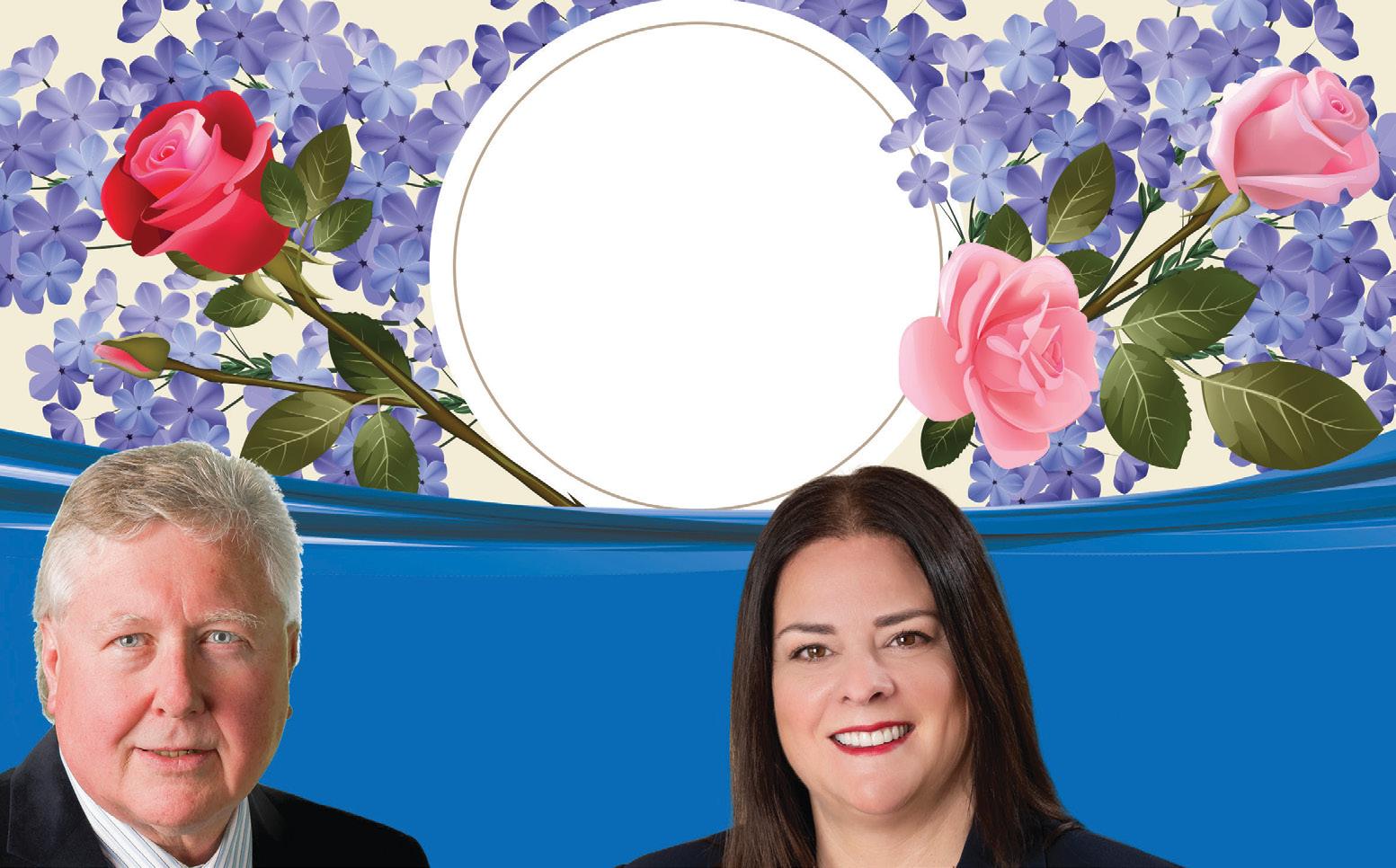
Dear Josh
Dear Josh; I think that you might be proud of me today, and that is something that for a while I thought I might never be able to say.
When it came to hiring new workers, in addition to the usual standards, I had three guidelines. I didn’t hire my friends’ family members, I didn’t hire anyone who didn’t have their own transportation, and while I would be friendly, I didn’t develop friendships with my employees. I broke the first guideline when I hired you, the second when I picked you up for your first day at work, and the third was, if not broken, seriously bent by the time I drove you home, that first day.
I started looking forward to our time together, driving to and from work. For the first few weeks, the job sites were far enough away that we got to spend quite a bit of time together. You were smart and intelligent and didn’t like to engage in small talk. Our conversations covered almost any subject imaginable and nothing was taboo. I was sorry when you got your transportation situation taken care of and our truck conversations came to an end.
The annual event at the Assiniboine Zoo will be happening on October 7. This is an all day event where you can come in to the zoo and wander around looking at the animals and displays while signing in to the various geocaches that are strategically placed in the area.
Fort Whyte Alive is having their first Geocaching Adventure on June 3. This is also an all day event and a good excuse to explore their 640 acres of prairie, forest and shoreline.
Both the Zoo and the Fort Whyte events will have an opportunity for new geocachers to take an introduction to geocaching course while attending.
that while I wished you success, I was selfishly happy that you didn’t find one. The longer it took you to find a job in your chosen field, the longer you would be hanging around, and I was quite OK with that.
After I got that phone call, late that Friday night, I drove by your place, thinking that I would stop by. When I got there, all the houselights were on. The driveway was full of vehicles. Your friends and family were gathering to support each other. I didn’t stop. No way could I imagine that I might be welcome there. I went back to my place, and I got drunk.
Rick Duerksen Reach
You know that I blamed myself for your accident. If I hadn’t hired you, you wouldn’t have been working for me. If I hadn’t taken that out-of-town job, you wouldn’t have been there that weekend. If I had insisted that you come back on that Friday instead of making arrangements so you could spend a couple of extra days there, you would have been back in town that evening. If I had just followed my up-‘til-then unbroken guidelines none of
And speaking of learning geocaching, an event that is usually very popular is the Unsolved Mysteries event happening on May 13 this year. This is a great opportunity to learn or sharpen your skills at solving mystery (puzzle) caches.

There is a set of concurrent events happening near Morden on June 10. The first begins at 8 a.m. and the last finishes in the early evening. They are all tied together and will prove to be a test of your endurance.
Work is being done to have a “Hands Across the Border” event where members from both the US and Canada are invited to come and enjoy a day at the International Peace Garden.
If you travel, there are events such as the Camping and Caching event in North Dakota during the last weekend of June and “Gilby Gone Wild” happens September 16.

I didn’t even touch on most of the coffee events coming up, so there is a lot of activity for Geocachers this summer. If you have not become a Premium member yet, the price for new premium members is going up on June 6th. There will be no change in price for existing members unless you let your premium membership lapse.
And back to the weather, the forecast changed three times in the short time it took to write this article.
See you on the Geocache trail.
Gary Brown is the President of the Manitoba Geocaching Association (MBGA) and can be reached at MBGAexec@ outlook.com.
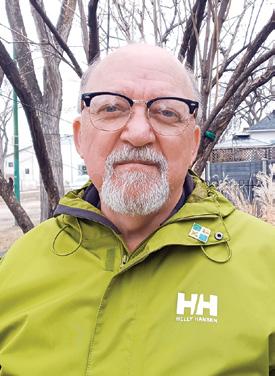
this would have happened. If only… •
Dear Josh;
I think that you might be proud of me today, and that isn’t something I would have said, not so long ago.
I didn’t do too well, after your accident. I still had that out-of-town project to complete. I still had all my other work. I had to hire someone else. I had to carry on, but I chose not to. I let things go and started to drink. A lot. Not to numb the pain but to exacerbate it. I wanted to feel angry, resentful, bitter, guilty – anything but normal. And the alcohol worked. Things got worse and I left the town where I had lived for almost 50 years, and I moved to Winnipeg. Actually, I didn’t move to Winnipeg. I ran away from my hometown. I ran away from my responsibilities. I thought maybe a new city, a new job, and a new start would work, and for a while, it did. But then I had to face that first anniversary on my own. And I was out of town. Actually, I was out of the province and out of the country.
Dear Josh;
I think that you would be proud of me today.
I spent the evening before and then that whole day drinking. It turns out
that when I was self-employed, I could get away with that kind of behaviour. But now I was an employee and it turned out that this was frowned upon. When I showed up at our US shop the next day, I found myself terminated. Going through Customs back in Winnipeg was interesting. I didn’t have any of my luggage, no carry-on bag, and no laptop computer. I had only the clothes I was wearing. Oh, and a 60-ounce bottle of duty-free vodka.
It took a long time, Josh. Years of sitting alone, feeling sorry for myself, and pouring alcohol into the wound from which I was constantly ripping off the scab. But then, one day, I realized that I wanted to live again. What I was doing was going to kill me and it wasn’t going to change anything in the past. So, I put the bottle down. I chose to quit drinking and get on with life. I let the wound heal. There is an ache where there used to be raw pain. As I write this, I am looking at a date on the calendar. Not with anticipation but not with dread, either. I have memories and I am glad to have called you my friend.
Dear Josh;
You would be proud of me today, and you know what? I am too.
Love, Rick
You had recently graduated with a degree in microbiology and were looking for a job in that field. I have to admit,
May 2023 whatsupwinnipeg.ca 9
Scott Johnston MLA for Assiniboia assiniboiamla@outlook.com 204.615.6044 Heather Stefanson MLA for Tuxedo tuxconst@mymts.net 204.487.0013
• •
• • •
• • •
Dynamic Talent, Dynamic Shows – Spotlight & On The Edge
The Royal Winnipeg Ballet School Professional Division (RWB School) will present dynamic talent in two brilliant shows for the 202223 season finale. Spotlight showcases the deepening of the Professional Division Ballet Academic Program students’ artistry, their breadth of talent and the young artists’ passion for the beauty of dance. On The Edge features the next generation of professional ballet dancers from the Anna McCowan-Johnson Aspirant Program, who perform diverse repertoire that will captivate and inspire.
Spotlight - featuring La Esmeralda Spotlight is a luminous collection of performances from the young artists in the Professional Division that serves as a culmination of their artistic growth. We are proud to present excerpts from the romantic ballet La Esmeralda in act one. Inspired by Victor Hugo’s 1831 novel The Hunchback of Notre-Dame, the ballet was originally choreographed by Jules Perrot to music by Cesare Pugni. Join us for a tale of love, jealousy, and revenge told through some of the work’s memorable variations. Our second act will feature thought-provoking pieces Manitoba Seasons from alumnus Philippe-Alexandre Jacques and Oh, the Places… from RWB School Resident Choreographer Gabriela Rehak, as well as the premiere of Rehak’s latest work co-choreographed with artistic faculty member Nicole Coppens and RWB Company artist Maggie Weatherdon. Technical excellence meets expert storytelling as these rising stars take to the stage.
According to Rafe Perry, an RWB School Professional Division student: “Spotlight is one of the highlights of
our school year. This performance allows us to bring our hard work from the studio and showcase it on the stage. It is my favourite show of the year because the entire Professional Division Ballet Academic Program comes together to put on a dazzling performance. It is really fulfilling to be a part of something so grand!”
On The Edge
Witness the exceptional talent of the Anna McCowan-Johnson Aspirants with On the Edge, a vibrant and intimate series of performances. This year’s performance will delight audiences of all ages with repertoire ranging from classical ballet to contemporary and neo-classical. Aspirants will perform


excerpts from the classical ballet La Bayadère, and the charming and comedic Fairy Doll. The performance will also include world premieres by RWB School Resident Choreographer Gabriela Rehak, RWB School Artistic Faculty Maritel Centurion, award winning choreographer Lesley Telford, and guest choreographer, Portia Adams. Up-andcoming Anna McCowan-Johnson Aspirant, Myles Mackesy will also create a neo-classical piece.
Vanessa Léonard, Director of the Anna McCowan-Johnson Aspirant Program summarized the heart and soul of On The Edge: “The Aspirant dancers are the young stars of the future, and their home is the stage. This perfor-
mance culminates countless hours of training to perfect their art and show the incredible skill and versatility that they’ve worked so hard for. From the purity and virtuosity of classical ballet to dynamic contemporary world premieres, this performance will delight all dance lovers. Come and cheer them on as they grace the stage!”
Spotlight runs from Thursday, May 25 to Saturday, May 27, 2023, at the Royal Manitoba Theatre Centre and On The Edge gets underway from Wednesday, June 7 to Friday, June 9, 2023, at the RWB Founders’ Studio.

Reserve your seats today at rwb.org to experience dynamic talent and dynamic shows!

Flin Flon hosts major Northern Canadian Arts symposium
“Winds in the east, there’s a mist coming in, like something is brewing about to begin.”
This is more than just an opening line from the Broadway musical theatre production of Mary Poppins, it’s a feeling in the air right now in Northern Manitoba.
In March, the first Northern Art Conference was hosted in Flin Flon, funded by University College of the North with support from the Community Economic Development Fund and Community Futures Greenstone and attended by the imagiNorthern committee, creatives, Northern Arts Organizations and Champions from northern Manitoba in addition to provincial and federal funders. To put this all in perspective the list of attendees was impressive.
We were very honoured and excited to not only have a keynote presentation by Canada Council for the Arts Chair Jesse Wente, but his presence as well as that of CCA Director Odile Joannette throughout the conference, relayed a deliberate intention of support from the East. We had representation from Canadian Heritage, Prairies Can, Manitoba Arts Coun-
cil, Manitoba Arts Network, University College of the North and Thom Sparling (Creative Manitoba). Trudy Schroeder (Arts and Heritage Solutions) helped guide the conference.
Strategic Moves’ Inga Petri traveled from Whitehorse to present her findings on the Northern Art Survey which was circulated throughout the north during the summer of 2022. Inga’s contribution was profound. She demonstrated in words and diagrams what we’d known in our hearts about the northern cultural sector. She clarified that indeed it is present and impressive but needs to be acknowledged, supported and promoted. imagiNorthern, incubated by the Flin Flon Arts Council, is a new network that can grow into a regional network across all northern Manitoba’s communities. Its champion network can be expanded to convene working meetings designed to identify and meet the needs across the North.
Strategic Moves
There is a notable shift in confidence and forward thinking momentum for the northern culture sector. Again Inga says it best in her report: Guided by our no-limits innovative spirit and
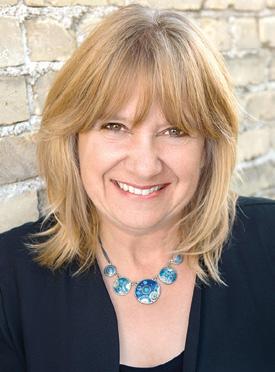
shared love and respect for the land we inhabit, we (Northern artists, art organizations, arts service organizations and cross-sectoral partners) build a thriving, inclusive arts and cultural sector that plays a profound role in a diversified economy, supports health and well-being or artists and communities, and celebrates and makes known the world over the North’s rich tapestry of cultures, languages, artistic and creative expressions.
As the Flin Flon Arts Council prepares the stage for Mary Poppins to fly into town from May 5 to 7th, directed by the fabulous Ann Hodges before she (who is also practically perfect in every way) flies off to direct an opera in Taiwan three days later, I have to share one final thought. The final number of the musical, which is a personal guiding principle in my life, I believe right now is a feeling flowing throughout the north like the aurora borealis…. Anything Can Happen If You Let It. I am positive that exciting times are ahead for the northern cultural sector and look forward to sharing it far and wide, north and south, east and west.
Apologies to Crystal Kolt for the error in her name in her last contribution. Crystal is the true Arts Mavin of the North. Her list of credentials are too long to mention, among them Culture Days in Northern Manitoba, Choir leader, Uptown Emporium founder . . .if it is arts in northern Manitoba, see Crystal in Flin Flon!
10 whatsupwinnipeg.ca May 2023
Spotlight, Ballet Academic Program student. Photo by David Cooper.
On the Edge, Anna McCowan-Johnson Aspirant Program Student. Photo by David Cooper.
Crystal Kolt Imagine North
Sad news for airline passengers and no relief in sight

Travel today is a far cry from the exciting adventure it used to be. Passengers are squeezed for space, starved for food and even water (a measly half a plastic glass of lukewarm water is no treat), and often the plane is so cold you arrive shivering. Remember back when you got a free pillow to rest your head and a blanket to cover you if you were cold? Headaches were treated with a kindly aspirin or two and you had “Three feet for your two feet” as was the slogan for CP Air before it became WestJet. A whole 36 inches! What a luxury. Today, some planes offer only nine inches from the front edge of your seat to the back of the passenger ahead of you. If you are a tall guy, your knees are constantly scrunched up against your chest. If you are a rotund person, you cannot use the table in front of you on some planes. And if folks are a little wider than what the airline considers “average” your shoulders are bound to stick out into the aisle.
And let’s talk about the aisles. They are so narrow that many people must go down them sideways. I don’t know how flight attendants cope with constantly running into oversize passenger shoulders. Some people say that seat width is only enough to fit a 12-year-old comfortably.
The latest nightmare is the Boeing 737 narrow bodied aircraft which has been getting progressively less comfortable as newer models are introduced. In the 737-700, the washrooms are too small to turn around in and certainly could not accommodate a mother and child.
The new 737 Max is a nightmare. Padding on the seats is very thin – part of the strategy to squeeze in an extra five rows of six-across seats – and they are rigid, hitting your spine just where it hurts most after a few hours. They recline only a few inches – if they recline at all. There are no TVs or other inflight entertainment. The seats are mounted on steel bars that limit the under-the-seat bag room (you can’t get even the smallest bag under the aisle seat).
Nor is first or business class any heaven. There are the same thinly padded, rigid seats that barely recline. I have never liked rigid seat sides that limit movement. They are the reason I avoid the bulkhead.
It is no picnic for the crew either. One told me that the design was lovely, but the passenger space was totally impractical – well she said “Unusable”. The galley is just as small as the washrooms, which are squeezed in beside it, instead of across the aisle from each other, as in most tourism class flights.
One good thing? There is lots of overhead space for your carry–on bags – lucky bags. They are treated better than the passengers. In the old days, airlines checked your bag – and delivered it – at no extra charge!

Fortunately, most airlines only use these planes for
What plane would you choose if you could?

According to Travelogist, for medium haul flights, the Airbus A320 is arguably the most comfortable narrow body jet out there. Thanks to the wider cabin, reduced cabin-wall curvature and better-placed windows, the Airbus offers a more comfortable ride than the 737. The A350 is on a different level, the seats are firmer and have better support, better legroom and better bathroom.
For a longer intercontinental flight, the Airbus A350 wins on every front from seat comfort, leg room, to lighting to lavatories and galley space to things such as lighting and in flight entertainment.
Airbus S.A.S. is a European aircraft manufacturer. It is the world's second largest maker of commercial aircraft (after Boeing Co.). It is co-owned by the GermanFrench-Spanish European Aeronautic Defence and Space Company (EADS), with an 80% interest, and Britain's BAE Systems, with 20%.
short and medium domestic flights – most of the time. A year ago, flying back from the Caribbean, we were stuffed in a 737-700 on WestJet for a seven-hour flight home to Toronto – and they had NO food! Said it was due to COVID-19 (bunk! The Air Canada flight from Winnipeg to Toronto had food.) However, the larger 737s are just as uncomfortable.
The Feds are in the process of tabling some new legislation purported to improve things for passengers. But early news says the changes are mainly related to flight delays, cancellations, and lost luggage. There is one provision to ensure there is water and food on a plane – perhaps to comfort those passengers who are stuck on the tarmac for hours. There is nothing related to passenger comfort, or misleading fare advertising. The new rules don’t include the many hefty “junk” fees. One pundit says that having read the draft legislation he sees holes in it big enough to drive a truck through. For example, airlines will not have to compensate passengers for weather related delays. This extends a huge loophole that we have already encountered. So far, all the delays I have experienced have been “weather related”.
And prices are going up. The security charge for air travellers, which will be in place by the time you read this, will rise for a one-way domestic flight to $9.94 from $7.48; they will increase to $34.42 from $25.91 for an international flight. It is not clear why this fee increase was felt necessary.


If you want to read more for yourself, here is the government press release about the proposed changes: canada.ca/en/transport-canada/news/2023/04/minister-of-transport-presents-proposed-amendments-tothe-canada-transportation-act-to-strengthen-air-passenger-rights-and-simplify-the-complaint-r.html

May 2023 whatsupwinnipeg.ca 11 www.theparkway.ca We are located at 85 & 95 Paget Street (off of Sterling Lyon Parkway) 204-487-8500 Meals, Housekeeping, Recreation and Transportation Included Spacious suites with balconies and indoor parking available In-Suite washer and dryer, kitchen with fridge, microwave and stove SIGN A LEASE WITH SERVICES AT 95 PAGET STREET AND RECEIVE $2000 OFF YOUR FIRST MONTH’S RENT THE PARKWAY Retirement Community Make The Parkway Your New Home Independent Living Suites with Services
Dorothy Dobbie
Post-pandemic air travel has proven to be challenging.
Tidbits
It’s been less than a pleasant winter weather-wise for most of us. Spring is finally here and it’s time to start enjoying the wonderful climate we wait so patiently for. It has been said and written many times by many people when questioned by those who no longer live here or never did, “Why do you live there?” One of the responses from die-hard Winnipeggers is, “Well, we get to enjoy all four seasons.”
I used to think that. I used to believe it. As I get older, I no longer do. I love spring. It’s the season of hope. I love summer. Who doesn’t? I’m not as fond of fall as I used to be as it’s the daily reminder of the

cold and snow that is just around the corner.
So, even though we’re all in a much better mood than we were a month ago, here are a few more thoughts to ponder to increase your mental well-being:
• The ability to speak several languages is an asset, but the ability to keep your mouth shut in any language is priceless.
Jim Ingebrigtsen


Is It Just Me...
• Be decisive. Right or wrong, make a decision. The road is paved with flat squirrels who couldn’t make a decision.
• Happiness is not having to set the alarm clock.
• When I get a headache, I take two aspirin and keep away from children just like the bottle says.
• Just once, I want the prompt for username and password to say, “Close enough.”
• Becoming an adult is the dumbest thing I’ve ever done.
• If you see me talking to myself, just move along. I’m self-employed. We’re having a meeting.
• Does anyone else have a plastic bag full of plastic bags, or is it just me?
• I didn't make it to the gym today. That makes five years in a row.
• Today’s 3-year-olds can switch on laptops and open their favorite apps. When I was 3, I ate mud.
• So, you drive across town to a gym to walk on a treadmill?

• I decided to stop calling the bathroom "John" and renamed it the "Jim". I feel so much better saying I went to the Jim this morning.
• Old age is coming at a really bad time.
• If God wanted me to touch my toes, He would've put them on my knees.
• Why do I have to press one for English when you're just going to transfer me to someone I can't understand anyway?
• Even duct tape can't fix stupid – but it sure does muffle the sound.
• It would be wonderful if we could put ourselves in the dryer for ten minutes, then come out wrinkle-free...and three sizes smaller.
• Lately, you've noticed people your age are so much older than you.
• “One for the road” means peeing before you leave the house.
Jim was a writer-broadcaster, producer and presenter on television and radio for 40 years. He is also a podcast host on Lifestyles 55 Digital Radio. Find Radio Redux and Mid-Century Memories at www.whatsupwinnipeg.ca
Banks breaking bad – stay invested or cash out?
As I write this opinion column a US regional bank, First Republic, is rumored to be in the midst of being taken over by the US Treasury or Federal Reserve. The Bank’s stock, once trading at $219, closed at just over $8 today (April 4th) or a 95% loss.


Investors are running for the exits as the Bank showed that they lost over $100 million in deposits since the Silicon Valley Bank blew up last month, which would also put all similar US regional banks that are not fully deposit-insured in jeopardy. Unfortunately, if they are suffering, other similar regional banks are also experiencing a flight of customers and their money to bigger banks. Regardless of immensely powerful intervention from the Federal Reserve and the US Treasury, regional banks are breaking, badly.
The reality is that bank loans to middle America will become constrained as money moves out of regional banks and that will have devastating effects on economic growth. As of now, most analyses of leading economic indicators I see that are published by independent economists are clearly demonstrating a brutal recession is coming – although if you speak to bank-owned economists, they will point to their economic forecasts showing just above zero growth. Well,
that seems strange, the disconnect between banks and independent economists, doesn’t it?
Let’s just call a spade a spade. The last thing banks ever want to project is doom and gloom because it fundamentally goes against their business model – so you will never hear them panic, never hear them say the market is going to blow up, never hear them tell you to pull your cash out of your portfolio. The best of the best of them, Jamie Dimon, is, however, on record admitting the coming recession could be an economic hurricane – but he also smartly suggests that his bank, JP Morgan, is well suited to handle the crisis for his customers.
You may be thinking to yourself that many economists say the sky is falling, but your banker is telling you to remain calm and do nothing or make small adjustments to your portfolio. So, what do you do? First, knowing what to do should start with how you would be impacted by significant losses if that were to be the case. If you cannot afford the losses, then it is GICs for you. Go with short term GICs and stick with one of the six Canadian Systemically Important Banks. If you are a more seasoned investor and don’t need the money soon, like within 10 years, I would set some capital aside, in cash, maybe
u In appreciation of mothers
Continued from page 1
unique every year as the presence of larger families diminishes. We didn’t grow up on a farm or ranch. My father is a retired schoolteacher and mom dedicated her life to having a large family and raising us with grace, determination, and a little bit of discipline (never toward me, of course).
The laundry and meals were never-ending. The on-time caravan to the Saturday vigil mass every week was never in question. Mom instilled a strong work-ethic in each of us and
ran a mini babysitting empire. The expectation of some form of work by the age of 14 was a standard in our house. Slipping grades was not an option and somehow all 14 of us eventually earned university degrees — a great tribute to a woman who didn’t have that opportunity herself.
Her influence is felt throughout our home area. Once everyone was grown and on their own, mom went to work as a Kindergarten and First Grade teacher’s aide at St. Timothy’s School. This probably didn’t come as a surprise to many in the parish who saw the lady with 14 kids every week in the back pew — the only seating long enough to mostly fit the whole family. Her passion for children is incredible.
That passion was clearly passed on to my eight sisters — collectively mothers to 30 of my 45 nieces and nephews. My wife and sisters-in-law love hearing stories from mom because the numbers alone are hard to comprehend.
I often feel I fall short in expressing my appreciation to my mother, but in her infinite wisdom and confidence she is quick to remind us how much a simple phone call or card means.
30%, and allocate it back into equities as the market cascades down over the rest of this year – if it indeed does. Note, you should be keeping 70% in high quality stocks of companies that pay dividends and have strong balance sheets. You should not own bonds with a term longer than 2-3 years unless you intend to hold them to maturity.
If you’re even more sophisticated, then you are likely employing strategies too complex for most of the readers of this column, and all the best to you playing the stock market like a casino – remember that the dealer always wins, and the market will always surprise you and eventually damage you when you least expect it.
At the end of the day, get advice. But remember, advice comes with strings and bankers are in business – even when banks are breaking bad.
Romel Dhalla is President of Dhalla Advisory Corporation and provides clients with strategic corporate finance solutions. He was a portfolio manager for 17 years with two major Canadian banks.

Remember to not get too hung up on the gifts and grand gestures. Our mothers, grandmothers, aunts and more, do not do everything for that type of recognition. They do it all because they love us. So here’s to all of the Mothers out there. You are loved and appreciated more than any of us could possibly express.
In peace, Tim.
Tim Chapman is the CEO at the International Peace Garden on the border of Manitoba and North Dakota. The Garden is open year-round and grooming ski trails for the first time this winter. Rent one of our cabins and enjoy a winter weekend that only the forest of the Turtle Mountains can provide.
12 whatsupwinnipeg.ca May 2023
Romel Dhalla On The Money
Tim Chapman
International Peace Garden looking down the boundary line.
Manpower requirement for Manitoba: Discussion with Hon. Jon Reyes

New Year ceremony
By Senaka Samarasinghe
Senaka Samarasinghe
Since Jan. 2023, the Hon. Jon Reyes has served as Minister of Labour and Immigration. He was formerly Minister of Advanced Education, Skills and Immigration, and, in 2021, he was appointed Minister of Economic Development and Jobs. From 2016 to 2021, Jon was the Special Envoy for Military Affairs for the Province of Manitoba
Because of his current role, Sri Lankan Seniors Manitoba board member Felix proposed at the last board meeting that we meet with the Minister to discuss manpower requirements in Manitoba. Indra, the President of SLSM, nominated Felix, Daya, Upali and Senaka. We obtained an appointment with Jon for the morning of Monday, March 27, 2023, at his constituency office located on Pembina Highway in Winnipeg.
Upali said that he will keep the minutes of the meeting for SLSM. Felix expressed that his task was to inquire about the type of immigration information required for 2023. Daya explained that his responsibility was to collect required manpower data from Sri Lanka. He stated that he will arrange to obtain the information through the Sri Lanka High Commissioner’s Office in Ottawa. Senaka said that he will do a summary of the meeting.
Jon said that one of the major pathways is the Manitoba Provincial Nominee Program, a highly successful program that was created by a Progressive Conservative government in 1998. Applicants can apply online. The maximum overall points is 1000 points. However, applicants are often selected with points between 600 and 700. Under this program, annual allocations are determined by the federal government for each province. For 2023, allocations were higher than in 2022. Manitoba received 9,500 allocations for 2023, which is a 50% increase from 6,367 for 2022. Jon promised to provide necessary information continuously to SLSM from his office and encouraged us to visit immigratemanitoba.com for up-to-date information.
Senaka informed the minister that Sri Lanka’s main foreign currency earner comes from the workers’ remittances. The High Commissioner of Sri Lanka to Canada, Mr. Harsha Kumara Navaratne, is conducting discussions with the Canadian government on how to respond in a small way to the annual huge demand in areas such as caregivers and nurses. Jon therefore recommended that SLSM look for the possibilities not only with the provincial government but also with the federal government.
All of us thanked Jon for his valuable time for SLSM, a period where Sri Lanka is undergoing acute
Sri Lankan New Year ceremony was conducted by Sri Lankan Association Manitoba (SLAM) on April 15, 2023, at the Victoria Inn Hotel and Convention Centre. There were four distinguished invitees namely: the Mayor of Winnipeg, Scott Gillingham, Deputy Mayor, Janice Lukes, Member of House of Commons, Terry Duguid, and Liberal Candidate for MLA, Uche Nwankwo.

All my family members got an opportunity to talk to all of these invitees.
The main event was the cultural show with twelve diverse cultural performances lined up with the participation of different age groups. My granddaughter Chamathi and my grandniece Saja participated in two different cultural events. This provided an opportunity to contribute to SLSM by members of all age groups.
Dinner was arranged after the cultural show and the dance floor was opened for the members. Dancing period was the fellowship period for non-dancing members.
problem of foreign exchange deficiency. If SLSM can pave the way for employment opportunities to Sri Lankans, that will help to improve the current foreign exchange crisis. Further, Manitoba will benefit from accessibility to manpower. In brief, this intervention will be a mutually beneficial venture in both the short and long terms.
Thank you, Hon. Jon Reyes, for meeting with us.
Sometimes not for profit boards get into really big trouble
Over the last few years, the board of Hockey Canada found itself facing much criticism, scrutiny, and sanctions for its record of using organizational funds to try to silence allegations of sexual assaults by some of their young, star hockey players. Current board members of Canada’s National Gallery find themselves facing intense criticism for the implementation process surrounding a new strategic direction, the organization’s selection of the gallery’s executive leadership, and the hiring and firing processes within the organization. While these are current examples of boards that have run into some significantly public moral and ethical issues, most board problems don’t make their way to the front pages of newspapers. However, it is actually shocking how frequently boards find themselves in exceedingly difficult situations that sometimes result in the financial or reputational ruin of the organizations the board members are entrusted to safeguard on behalf of their communities.
Serving on the board of a community organization should be a fulfilling and positive experience. After all, community members are using their scarce free time to help out in the community, and this contribution should be seen as the sacrifice that it is for the members of the board. However, it is easy to forget that the responsibilities and duties of board members are significant, and there are many ways that boards can deeply endanger the organizations they are there to serve.
Excellent resources are available to help boards
and board members understand their roles and responsibilities. I am particularly impressed with the information available through BoardSource.org. Imagine Canada also has a very good governance standards program that can be very helpful to ensure that boards and board members are fully informed of their responsibilities and liabilities and that all the indicators and processes of good governance are in place. (This is significantly more complex than many people realize.)
Disaster lurks when adequate the standards of good governance are not nurtured and strengthened within the organization. This is a very big and important job, and often boards are so caught up in the challenges of the moment that they do not pay adequate attention to issues of good governance. Board Source has an excellent book that identifies the 10 basic responsibilities of non-profit boards:
• Determine mission and purpose for the organization.
• Select the Chief Executive.
• Support and evaluate the Chief Executive.
• Ensure effective planning.
• Monitor and strengthen programs and services.
• Ensure adequate financial resources.
• Protect assets and provide proper financial oversight.
• Build a competent board.
• Ensure legal and ethical integrity.

• Enhance the organization’s public standing. On the face of it, this seems very straight forward,
but each one of those elements takes significant care and large amounts of time. Both board members and organizational staff members are often so overwhelmed with annual operating requirements, that many of these basic responsibilities of the board are almost ignored. Organizations ignore these responsibilities at their peril.

Many years ago, I attended a governance session at a conference at which a presenter said he was convinced that you could not have a good and healthy organization if the organization did not have a good and healthy board of directors. Over the years, I have come to recognize how very true this is. Good governance is hard earned, but it is fairly easy to maintain as long as you have good processes and schedules in place for checking and maintaining the essentials of good governance. But with board members changing regularly, and board presidents and executive members bringing different levels of governance experience and capacity to their roles, it is also very easy for a stable, well-governed organization to slip into chaos and dysfunction.
The responsibility to maintain good governance and board health is a primary responsibility of the board chair, just as the responsibility for good internal operations, processes, and organizational health falls on the chief executive. Sometimes a board chair is unable or unwilling to take on the responsibility for good governance, and in that case, the responsibility falls on each board member. If a board on which you serve seems to have some governance problems, it can be very helpful to conduct a governance review of the organization, identify areas of weakness, and start working to rectify the problems. Ask to join the governance committee, and start to address the issues.
May 2023 whatsupwinnipeg.ca 13
The Hon. Jon Reyes met with the Sri Lankan Seniors Manitoba.
Trudy Schroeder Random Notes
An ode to the oriole
Being such an avid bird lover people often ask me what my favourite bird is. That is a hard one to answer because I find something wonderful in all birds but, I must say there is one bird that I quite adore and look so forward to seeing each spring, the oriole. Their brilliant plumage and even brighter song is something I literally start dreaming about as spring approaches. They are such an exciting bird to see and to have them regularly visiting your own backyard is just such an honour.
The most common oriole is the Baltimore oriole, but the Orchard oriole is another specie sometimes seen at birdfeeders. The male Baltimore oriole is most known for its flaming orange color with a contrasting black hood and wings which also have two white bars across them. The female and juveniles are paler in colour with a yellow-orange plumage and grayish wings and head. Their preferred habitat includes areas in and out of the city with mature trees, especially elms. In fact, Dutch elm disease has played a suspected role in their decline as American Elms are one of their favourites for nesting although they do also use Maple trees and Cottonwoods.
ready to fledge in another 12 to 14 day period.
Orioles have a varied diet and are very beneficial in eating nuisance insects and they aid in pollination of many trees. They eat berries, blossoms, flower nectar, beetles, spiders, grasshoppers, wasps, and mass amounts of tent caterpillars which can be devastating to tree foliage. Orioles are known for eating in a manner called 'gaping'. When they find ripe, juicy fruit, they will stab it with their beak and drink up the juice with their textured tongue.
Friends
Male Orchard orioles are the smallest of North American orioles and have a deep chestnut colour rather than the bright orange of the Baltimore. Females are a combo of olive green and yellow and juvenile males are the same colour but with a black bib on the chest. Unlike the Baltimore, Orchard orioles will sometimes nest in groups in the same tree. Orchard orioles are also eager to get through nesting season, they arrive in May and are often heading back to South America by mid-July compared to Baltimore's who can be around until September.
Nesting season begins with the male singing loudly to stake his territory and to attract a female. When one arrives, the male begins his courtship by facing the female, standing tall, then bowing up and down with his tail fanned out and wings spread. Once a female accepts a male, she begins the construction of an elaborate hanging pouch for a nest. She gathers grass, plants, bark, moss, and even animal hair to weave the pouch onto a branch 20 feet or higher from the ground. The female lays 3-6 eggs that are pale in colour with dark speckles. She will incubate for 12 to 14 days and once the young hatch, both parents feed them until they are
To attract orioles to your feeding station you can offer several foods. First, there are nectar feeders that are similar to a hummingbird feeder but designed to accommodate the size of an oriole. In these, you can prepare a sugar water solution of four parts water to one part sugar which is suitable to both hummingbirds and orioles. No other sweeteners or artificial colour is recommended. Change it weekly at a minimum but in hot weather two to three times per week is better. Another food choice is fresh oranges. There are feeders designed to mount a half of an orange on so the oriole can perch and pick the fruit out of the rind. The next food choice is an odd one to some people, but it is without a doubt the favourite, grape jelly. Again, there
are feeders to offer this and some are designed to offer the oranges and jelly together. I have gone through as many as 50 jars of jelly in a season and have witnessed some amazing things at jelly feeders including parents bringing their young to jelly and teaching them how to eat. Jelly and orange feeders can also attract many varieties of warblers, Gray Catbirds, and even Rosebreasted grosbeaks to name a few. Another great attraction for orioles is a water source. Whether it's a basic bird bath or an actual water feature/fountain you will see some serious use from orioles. They really enjoy the water for both drinking and bathing and on hot summer days expect to see multiple visits.
These feeders should be put up in early May to attract them as they arrive. If feeding birds is not possible for you, take the time to visit a park or take a river walk and look up into the treetops to hopefully see that beautiful orange flash of an oriole and to hear their glorious call. They really are a bird worth dreaming about!

Sherrie Versluis owns the Preferred Perch and is an avid birder.

Vectors: Forces which have direction

The following story is part a new feature, the serialization of our columnist Wayne Weedon’s fictional work, Vectors. Wayne is a brilliant writer whose style consists of simple declarative statements that stick in your mind as he leads you through an intricate web of circumstances to reach the lesson he set out to teach.
Chapter 3: A Slow recovery
Continued from April
The next morning, when I opened my eyes, I remembered I was in Mr. Graham’s bed. Through the open door, I could see him puttering in the kitchen. When he saw I was awake he told me to go clean myself up, while he made me something to eat. I did as I was told. I still felt a little woozy, but I managed to eat a soft-boiled egg with a piece of toast and a cup of tea. I didn’t resist when he told me to go back to bed.
I woke up for the second time around ten. I needed to go to the washroom. Mr. Graham wasn’t at home. I guessed he must have gone to the store for something, and I went back to bed. I immediately fell back to sleep. When I awoke again, I could hear Mr. Graham whistling softly in another room. I found I was now wide awake, and I didn’t feel like going back to sleep. I debated whether I should get up; I still felt weak, my head was throbbing, and my muscles ached. Mr. Graham must have heard me rolling around the bed; he came in and suggested I should get up to eat. After I ate my lunch, he suggested I go back to bed where he would read to me. I was too weak to disagree, so I crawled back into bed, closed my eyes, and let him carry on. I was convinced he would be reading a boring book. It started off with some quote from Macbeth; you know… that Shakespeare play we had to take in grade nine. The quote was all about a guy with insomnia. I wondered if this was Mr. Graham’s idea of a joke.
The main part of the book started off with a teenybopper girl named Freddy. I thought, what a stupid name for a girl and on top of that she makes homebrew. How odd is that? I was positive this would be a Pollyanna type of story. Without knowing it, after a while, I started getting interested in what was happening, and when, at supper time, Mr. Graham said he was going to heat up the soup, I wanted to hear more of the story. I suggested he should continue reading and we could eat a little later. He overruled me, telling me I needed my nutrition to get better. I was annoyed. I didn’t like him trying to boss me around.
Mr. Graham brought me my supper in bed, he went to the kitchen table to have his. From where he was sitting, we could see each other, and we chatted as we ate. After I had my soup and half a sandwich, I coaxed Mr. Graham to continue with the story. I couldn’t believe it, Mr. Graham read right through until almost eleven o’clock. I was tired and half asleep when he rose from his chair, lightly caressed my head, and kissed me just above my eyes as he had previously done. That night I dreamt about Freddy, Griselda, and other characters from the book.
The next morning, after breakfast, I didn’t want to come right out and ask for more of the story, so I casually brought the subject up. He told me he had chosen this book because the author was much like me. This author failed high school mathematics several times and, because of this, he wasn’t allowed to obtain a degree from any Canadian university. Despite being ignorant about mathematics, in Mr. Graham’s opinion, this author became the best novelist in Canada. I asked Mr. Graham if he thought he could be successful in teaching this author maths. He replied, with the right tutor, anyone can easily master mathematics.
The title of the book was Tempest Tost, written by some guy with the first name of Robertson. Can you believe that? Mr. Graham told me this author’s first name was William, but he preferred to use his middle name, Robertson. It all sounded so zany, but I couldn’t help asking for more of the story.
Incredibly, Mr. Graham read to me almost the entire next day. Eventually, he told me to go for a shower while he changed the bedding. I was too weak to resist. He had this thing about changing sheets regularly when you’re sick. He even insisted I change my pyjamas and the idea came to me he was going to wash my soiled pyjamas. I wondered if that was his fetish.
The routine of Mr. Graham reading to me continued. At night he started making me cocoa before I went to sleep, and when he tucked me in, he would always give me the same gentle rub on my head followed by a kiss above my eyes. I started to look forward to it. Soon, we came to the end of Tempest Tost and Mr. Graham started reading Leaven of Malice, the second book of a trilogy. It was while reading this
book, Mr. Graham explained how everyone, including him and me, were in the habit of putting on various personas, different ones for different people. We were always acting out parts to impress or manipulate people. He gave the example of people raising the pitch of their voice when they speak to children and lowering it when they speak to someone in authority, such as a doctor or a magistrate. He stated we live three lives, public lives with various personas, private lives, again with different personas, and secret lives that most of us do not admit to, sometimes not even to ourselves. The author’s descriptions of various characters showed how individuals used these various personas. He did this in a subtle way, but I’m certain no reader could miss the point. Two characters in particular, Mathew Snelgrove, a lawyer, and Walter Vambrace, a university professor, were caricatured so clearly it was humorous, but also disconcerting, since I, as a reader, was compelled to question my own behaviour, as well as the behaviour of people I knew.
The reading went fast and before we knew it, we were reading the last book of the trilogy, A Mixture of Frailties. I found this book especially disconcerting. In this book’s characters I could see myself and I could see my family, and this gave me nightmares. I never realised how stupid my family, including myself, looked to outsiders. I wrote down this author’s name; it’s Robertson Davies, and he is sardonic and cruel, but in a humorous way so you can’t ignore him.
It was on a Friday when I first got up for the whole day. The following week was to be reading week so there would be no school. I had missed handing in papers, and I missed a test. Mr. Graham told me he had spoken to my professors, I could hand my papers in late, and take an alternate test. He then told me he would continue with reading after I had a shower. He suggested I should get properly dressed; I had been in pajamas too long. He stated, he would read first, and later, if I felt up to it, I should go out for a walk and get some fresh air.
After my shower I looked for my jeans, I couldn’t find them. Where did Mr. Graham put them?
Continued next month: Chapter 4, A Girl goes wild
14 whatsupwinnipeg.ca May 2023
An Oriole enjoying some grape jelly.
Sherrie Versluis Feathered
IF YOU ARE A SENIOR. . . . . . You should consider having the following in place

Will
The preparation of a will may seem like a daunting task, however, it is essential to ensure that your property is disposed of according to your wishes upon your death. If you pass away without a valid will, the law states what is to happen to your estate.
Power of Attorney




A power of attorney is a document which appoints an individual to handle your affairs in the event you become mentally incapable of making your own decisions. Nothing prevents you from continuing to make your own decisions while you are still competent. A power of attorney is an extremely valuable document to have in place in case anything happens to you which affects your mental ability, such as a stroke, coma or dementia.
Health Care Directive (Living Will)


A health care directive, commonly called a living will, is a document which appoints an individual to make decisions with regard to your health care only, while you are alive but unable to express your decisions yourself. This document is distinct from a power of attorney and deals only with health care decisions such as whether life sustaining treat ments, such as CPR or blood transfusion, should be continued or withdrawn.




- Rates are per person.
(includes both meetings) *Plus
Home and



visits are also available $250.00* (includes both meetings)

May 2023 whatsupwinnipeg.ca 15 For more details go to localgardener.net • Connect with us Simply download Canada’s Local Gardener app on your mobile device and you can access the digital editions of the magazine quickly and easily! Read, relax, enjoy. Enjoy digital editions of Canada’s Local Gardener magazine on your favourite mobile device! Official English Language Magazine Celebrate the Year of the Garden with TACIUM VINCENT & ASSOCIATES 206 St. Mary’s Road, Winnipeg, MB R2H 1J3 DAVID G. VINCENT (204) 989-4236 www.taciumvincent.com
Standard Fees* Seniors Last Will and Testament $225.00 $200.00 Power of Attorney $175.00 $150.00 Health Care Directive $ 75.00
PST
* plus GST and
hospital
PST Fees* Will and Testament $250.00 of $225.00 $200.00 Health Care Directive $125.00 $100.00
GST and PST -
$250.00*
GST and PST. Find home care for you or your loved one CarePossible.ca A program by Manitoba Possible q $36.00*, 12 issues q $72.00*, 24 issues *Plus applicable taxes q Cheque q VISA q Amex q MasterCard Card No Expiry ........................ Signature Name Address City................................. Prov............ Postal Code ....................... Telephone...................................... Fax.......................................... Connect with us online: whatsupwinnipeg.ca | Facebook: Lifestyles55 | Twitter: @Lifestyles55 Don’t want to miss a single issue of Lifestyles 55? Call us at 940-2700 and ask Shelly, she will be only too pleased to help you purchase a subscription that will bring the paper right to your doorstep! Shelly can arrange for a small monthly charge to your credit card. Or you can start by filling out and mailing in this form to: Lifestyles 55 c/o Pegasus Publications at 138 Swan Lake Bay, Winnipeg, MB R3T 4T8
*plus GST and
*Plus
Rates are per person.






16 whatsupwinnipeg.ca May 2023 FRIDAYS & SATURDAYS 4PM - 9PM FOR 50+ MEMBERS $27.95 50+ MEMBERS SAVE MORE! $41.95 FOR NON-MEMBERS. SOME CONDITIONS APPLY MEMBERSHIP DISCOUNTS INCLUDED IN PRICE. VISIT SOUTHBEACHCASINO.CA FOR DETAILS. Follow us on social media and find out what we’re up to! Find out more at www.localgardener.net Local Gardener Canada’s Check out the new weekly gardening E-digest from Canada’s Local Gardener magazine! Find out more at www.localgardener.net/flora-and-fauna A harvest of wonders from Canada’s Local Gardener! The Official English Language Magazine of








 Tim Chapman
Tim Chapman







































































